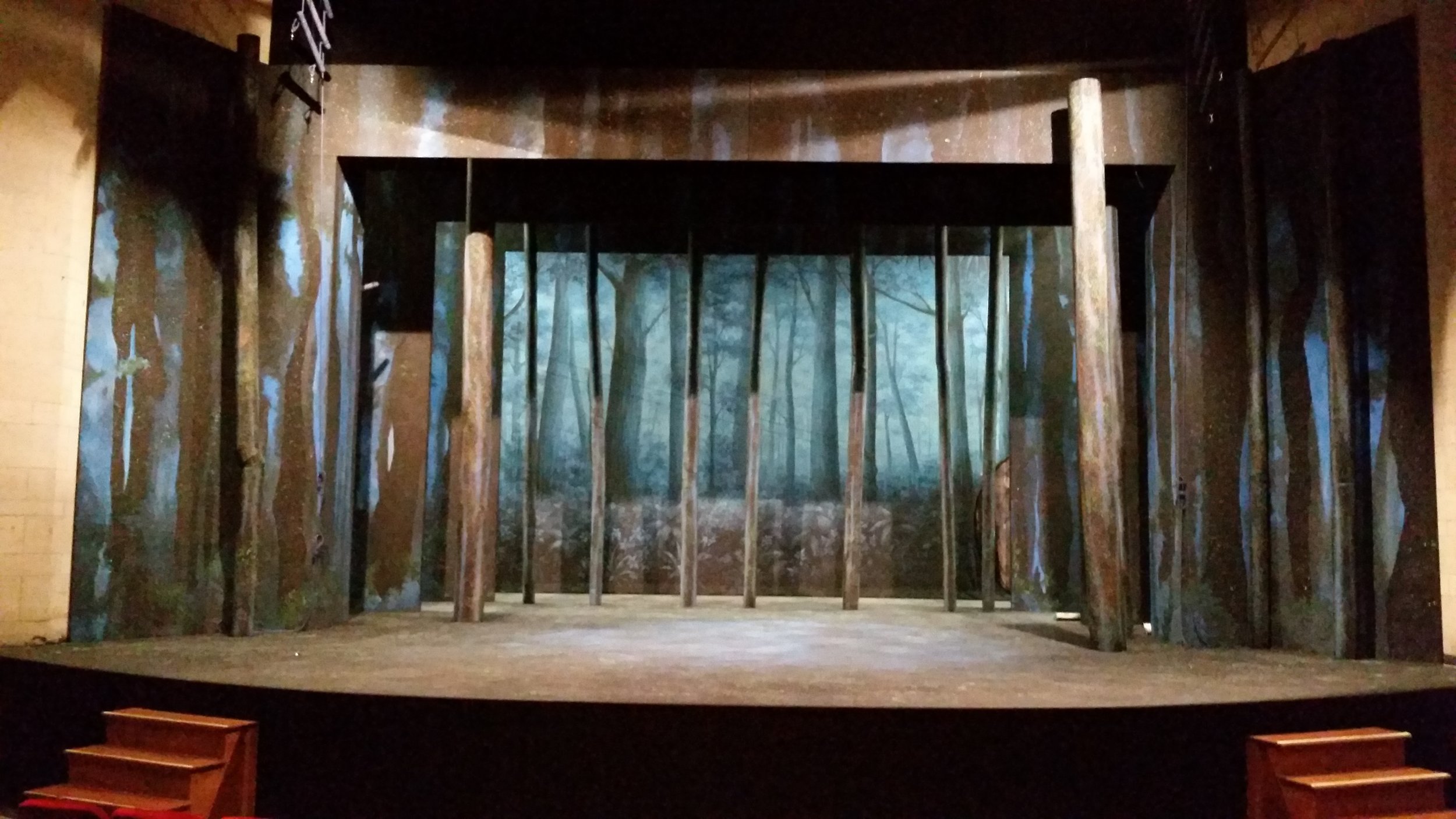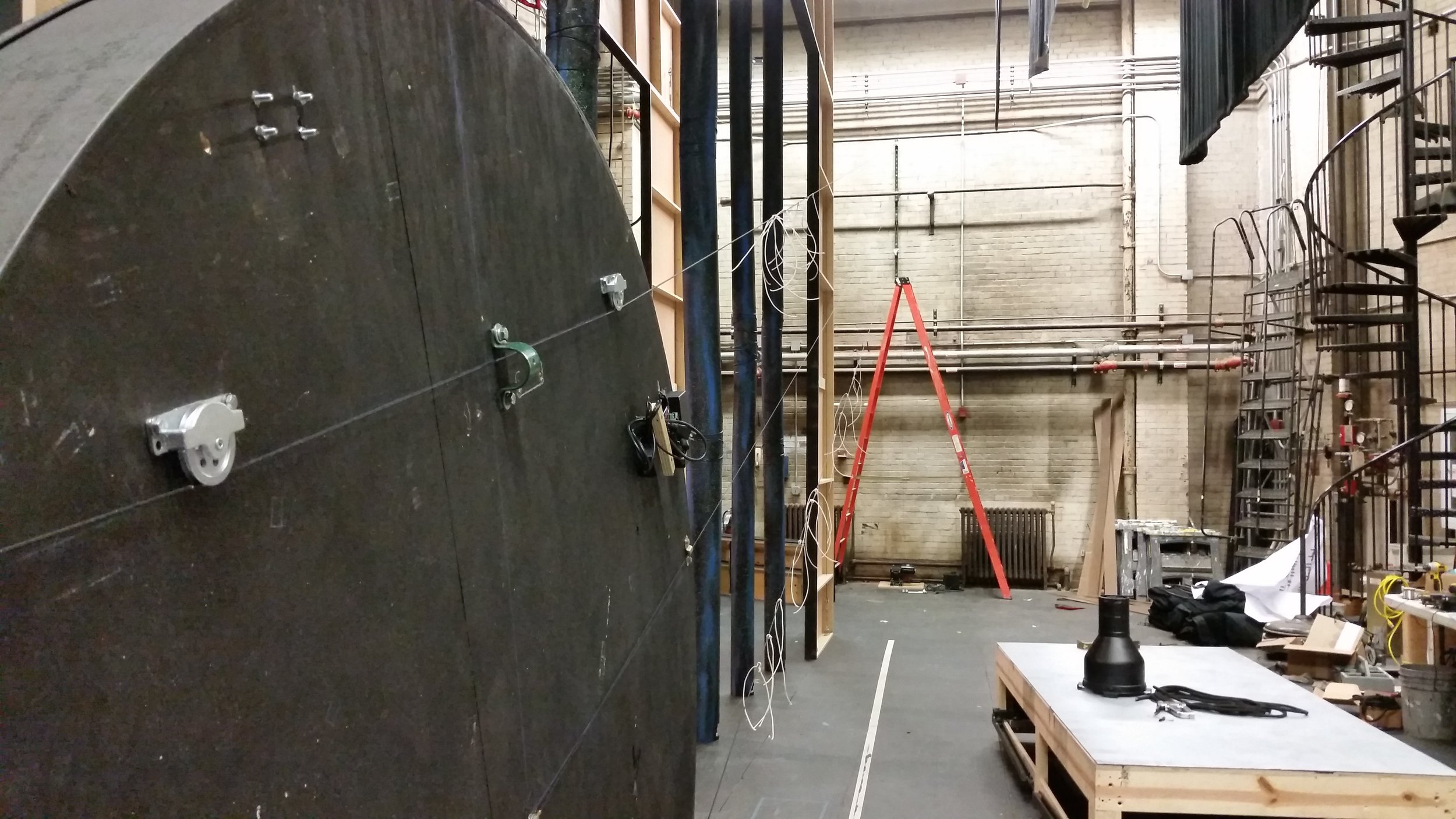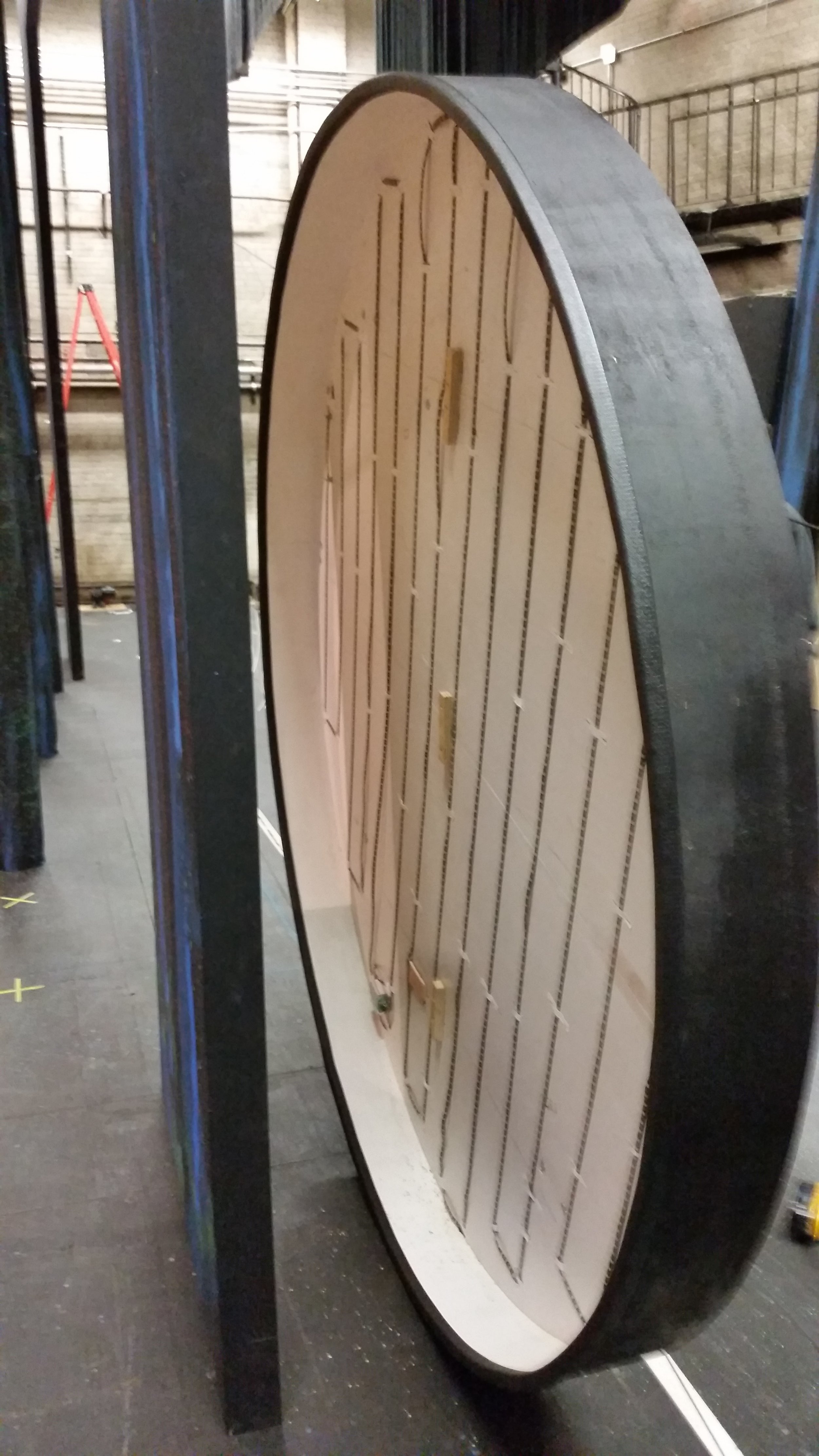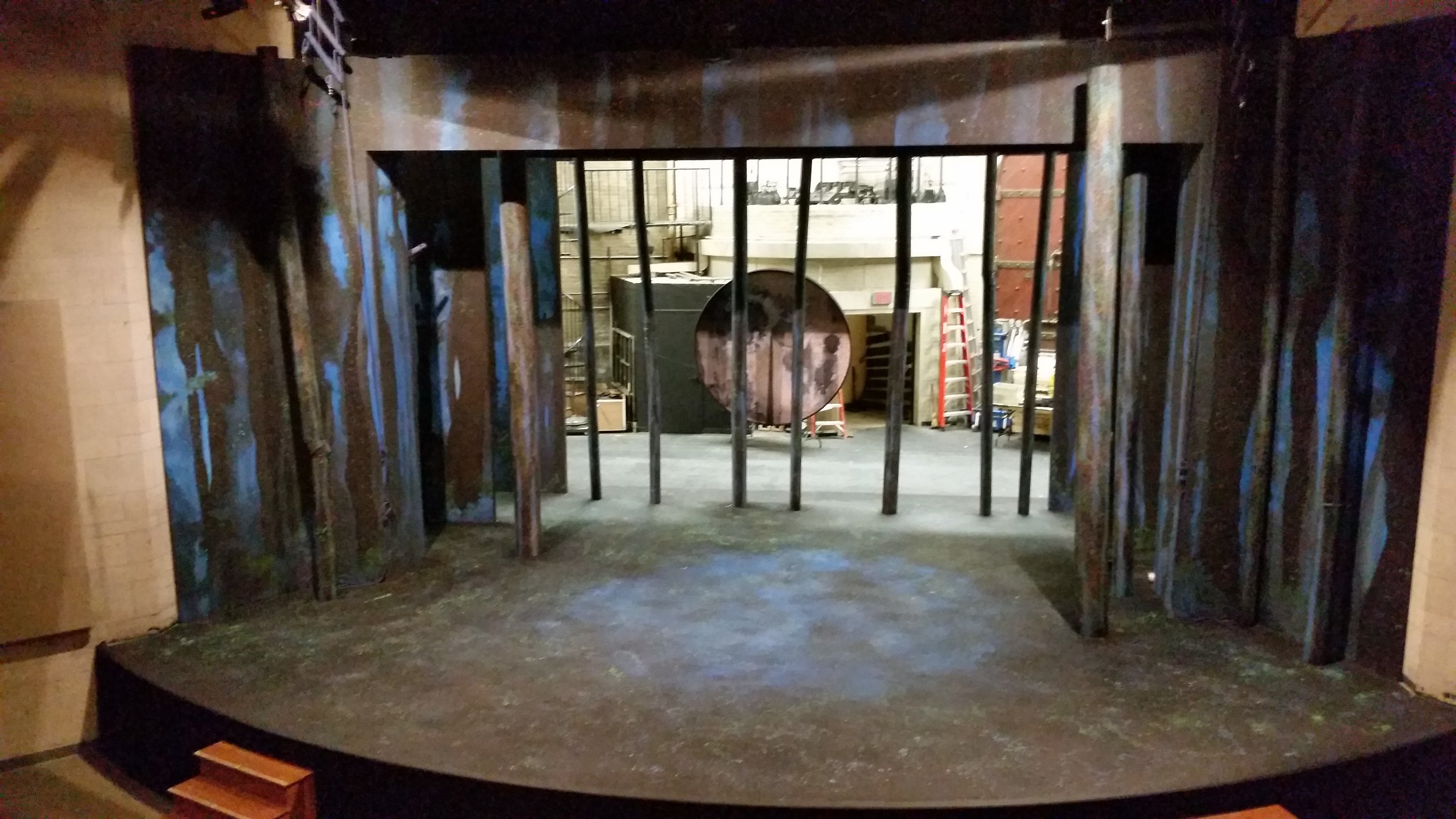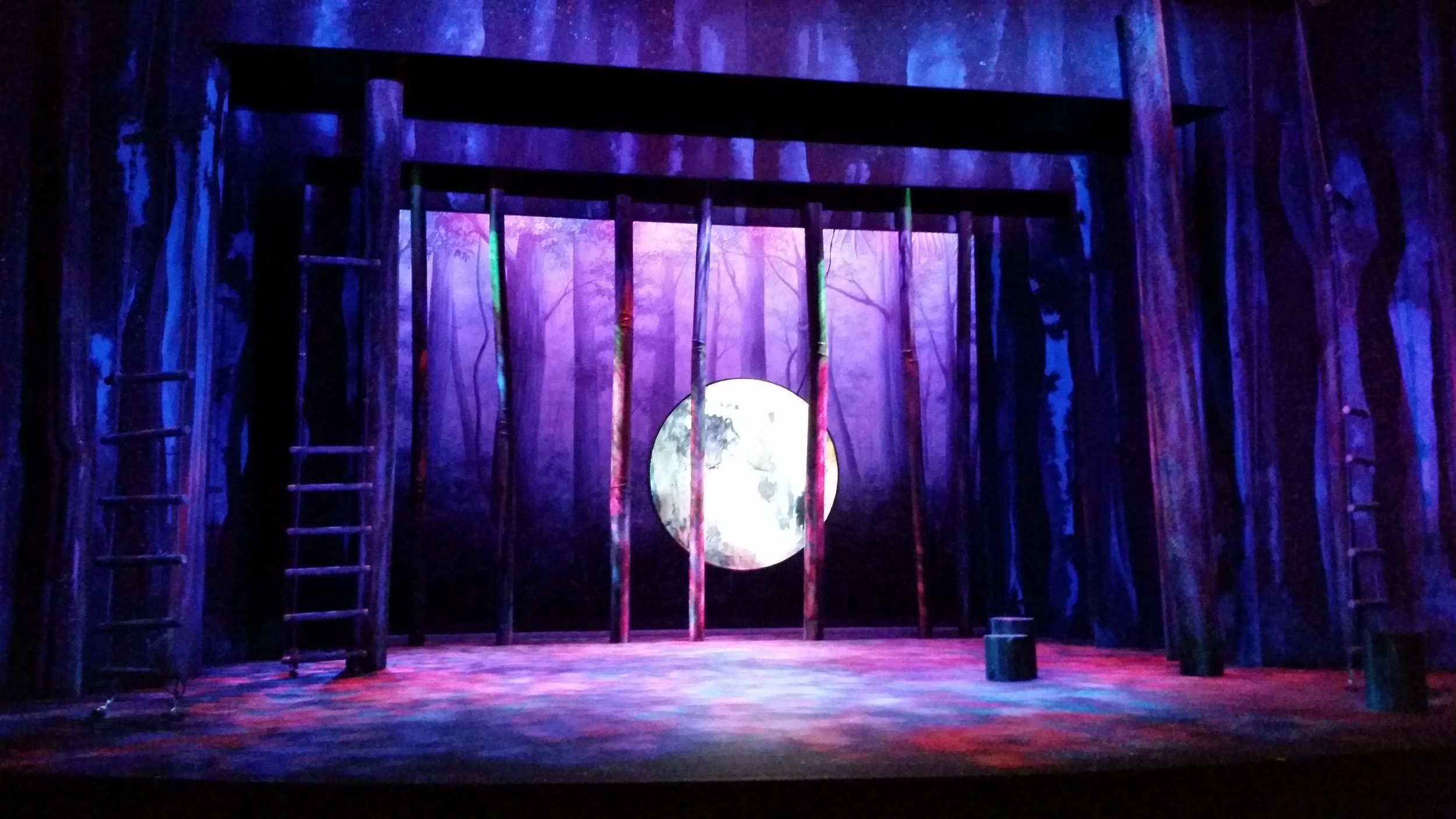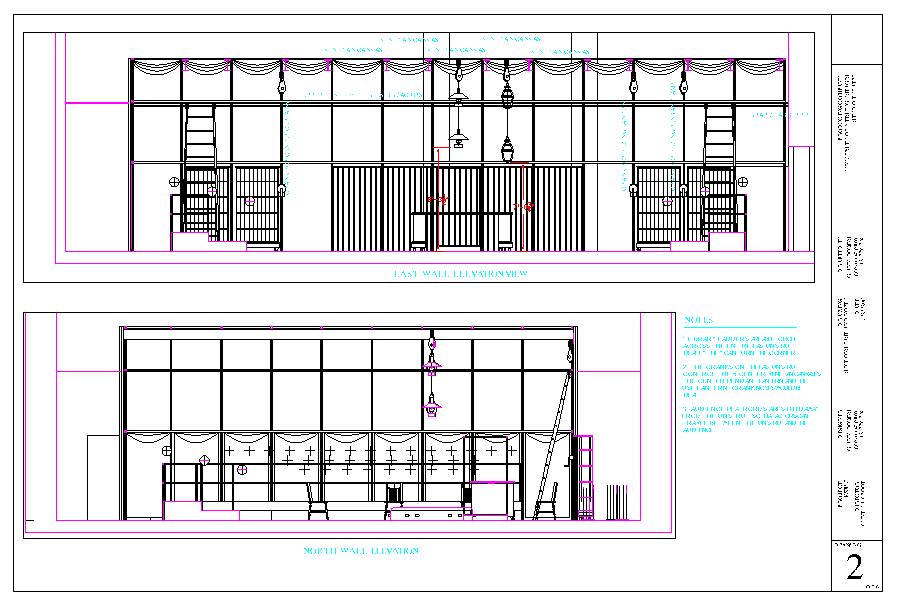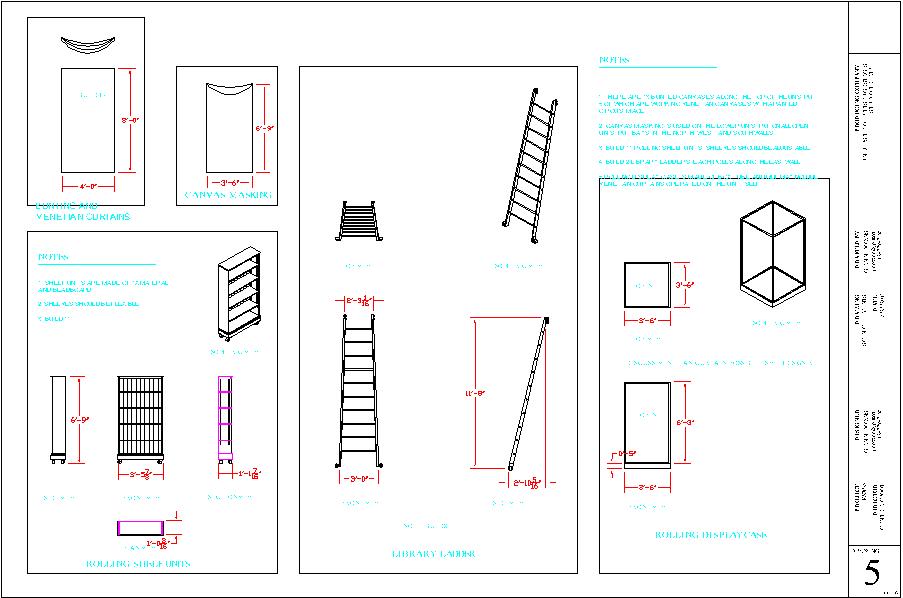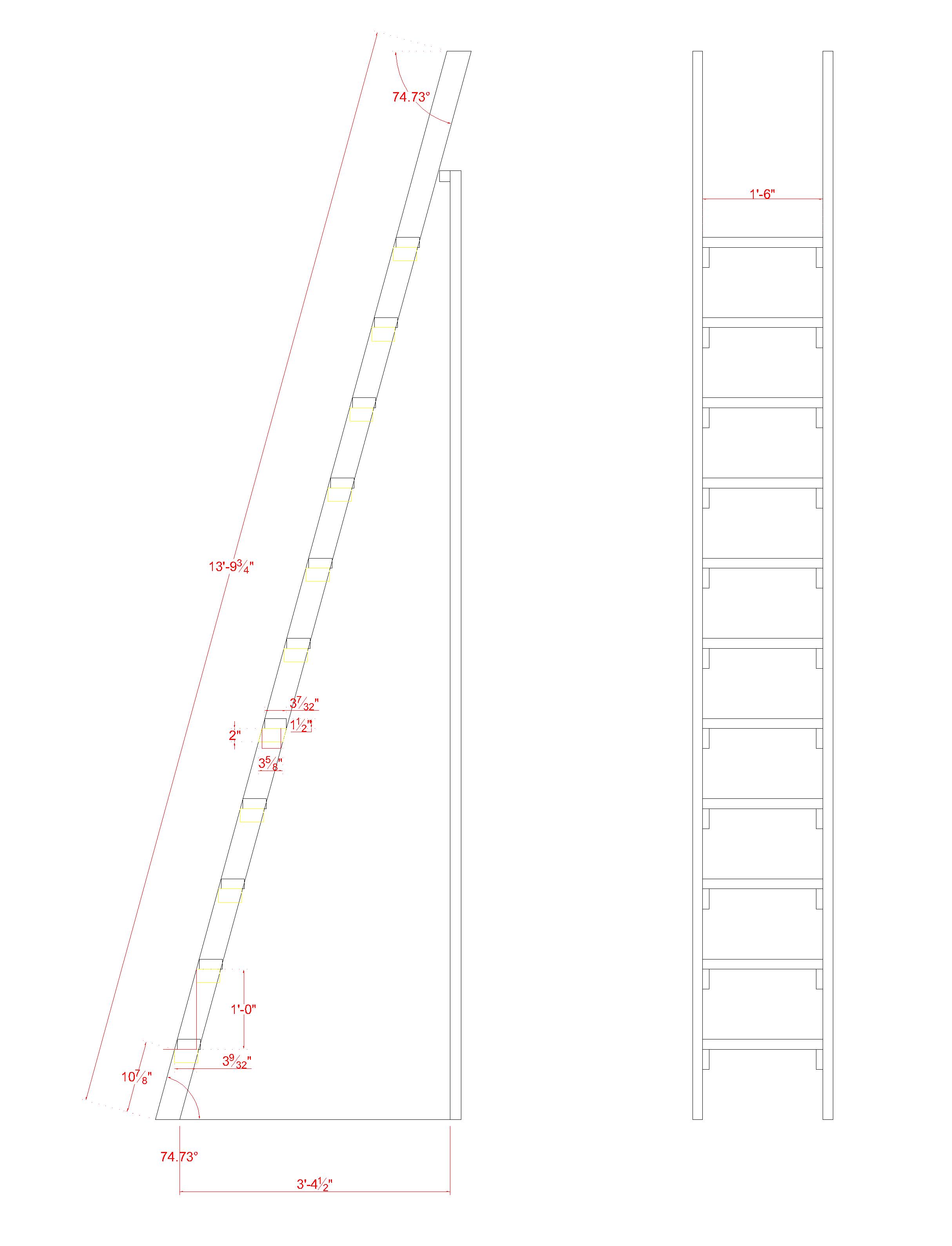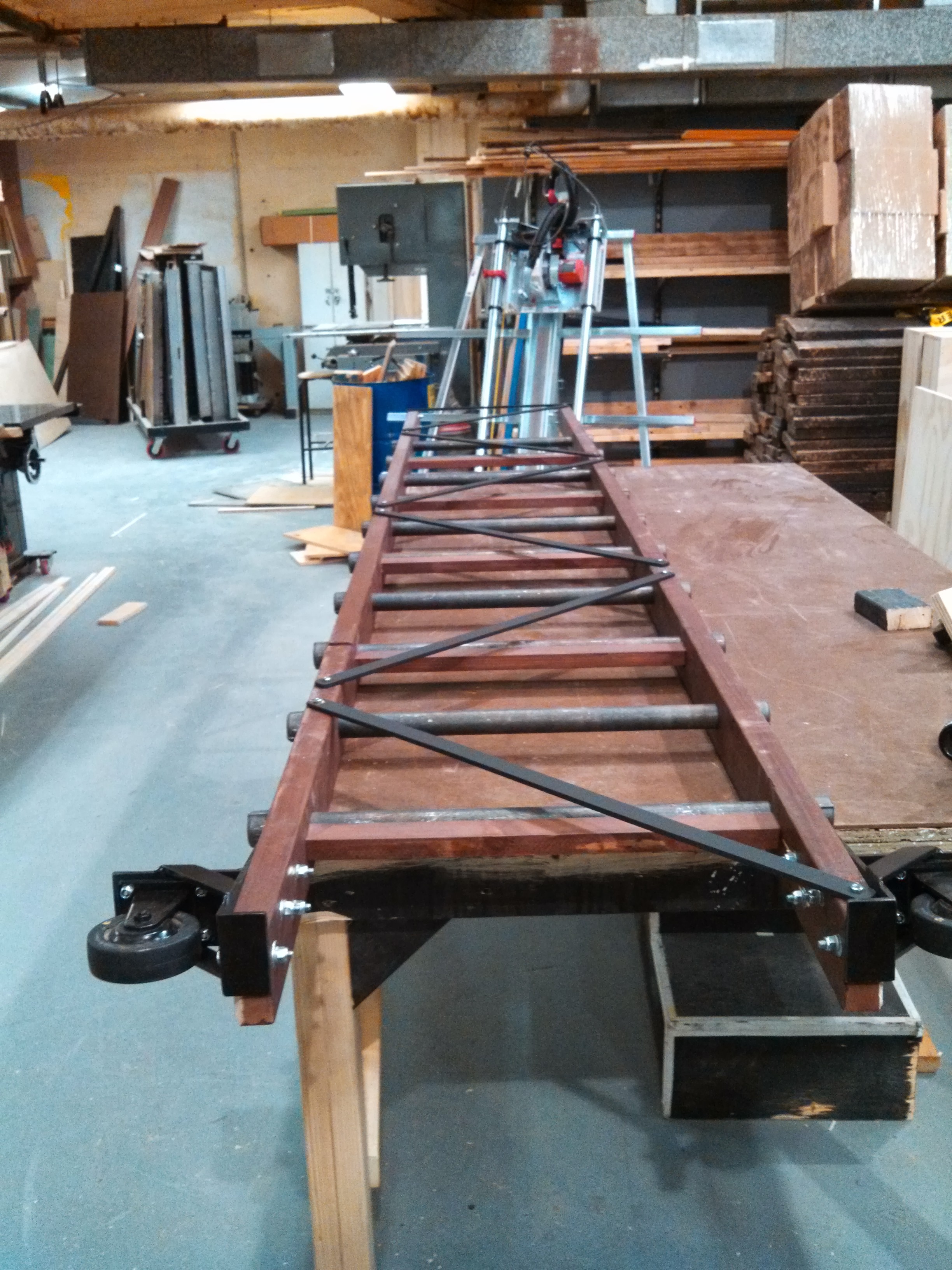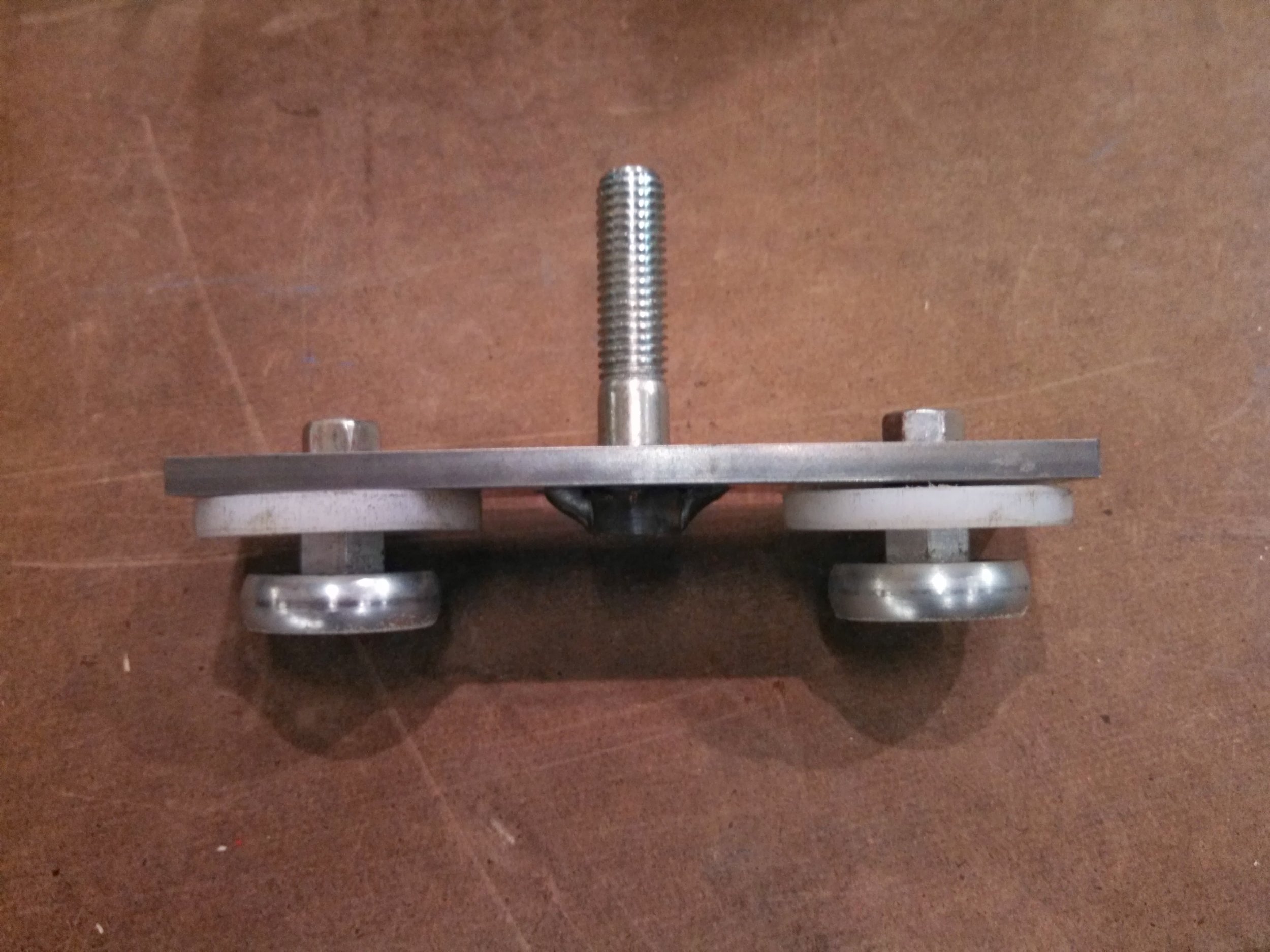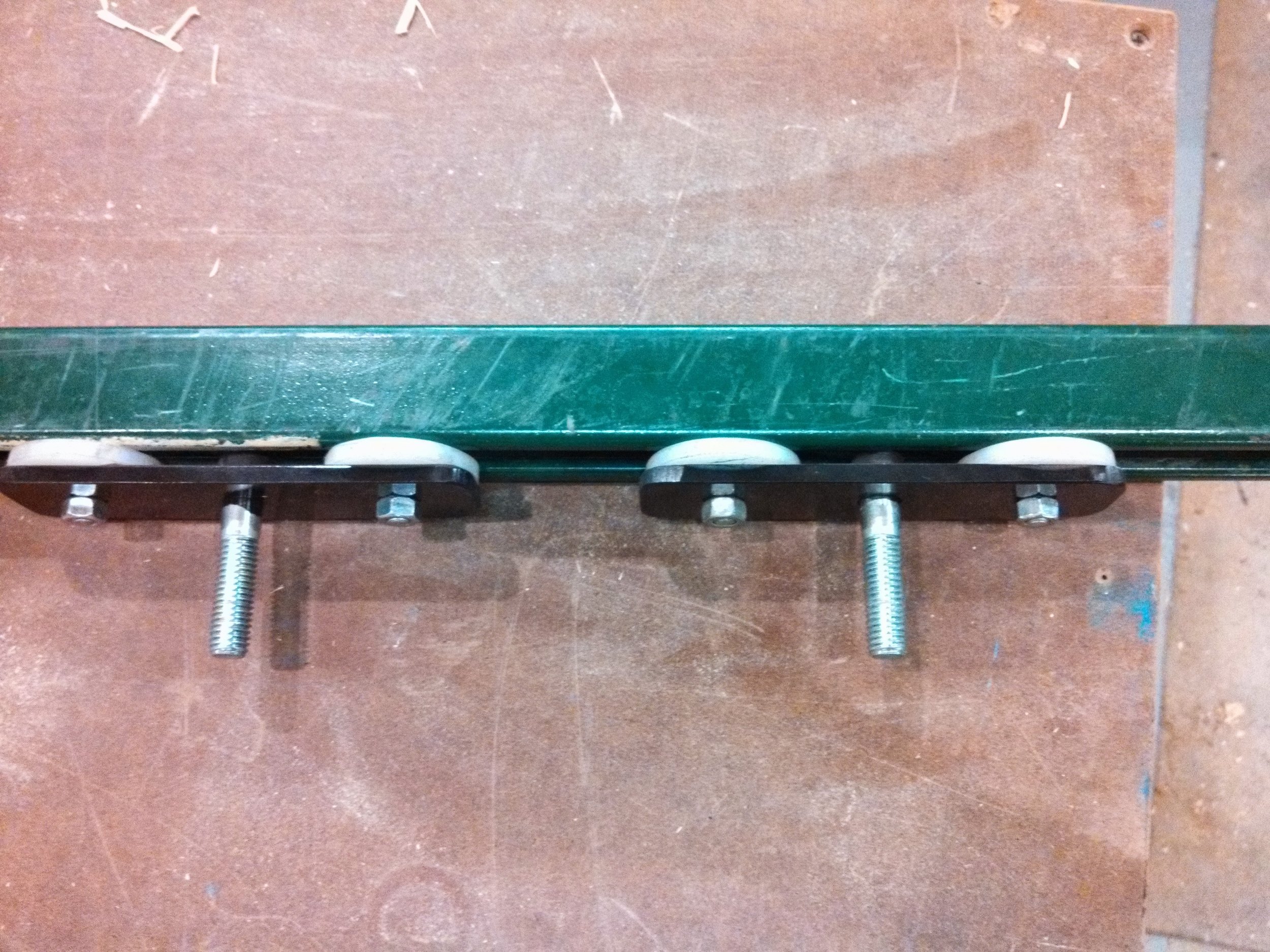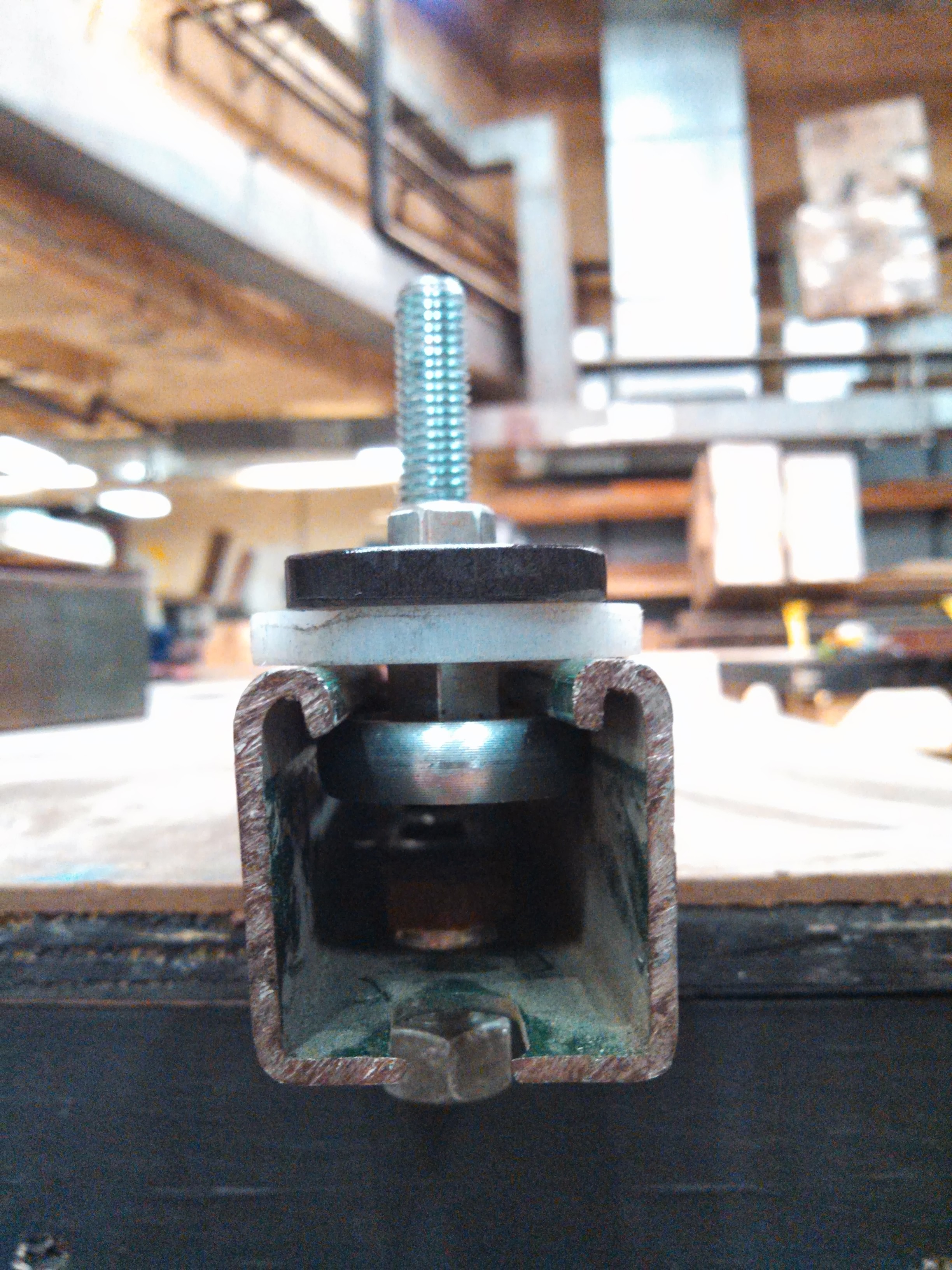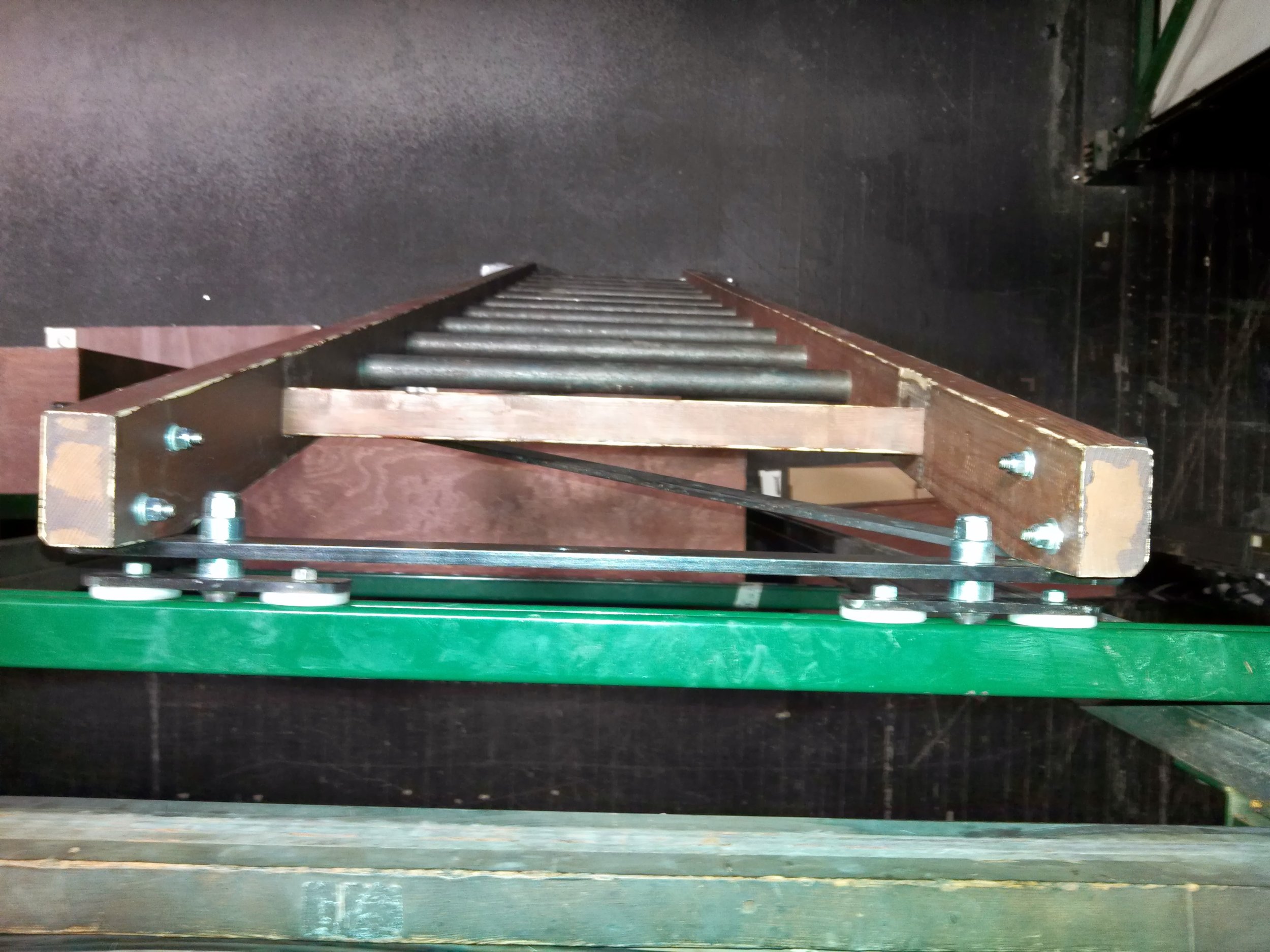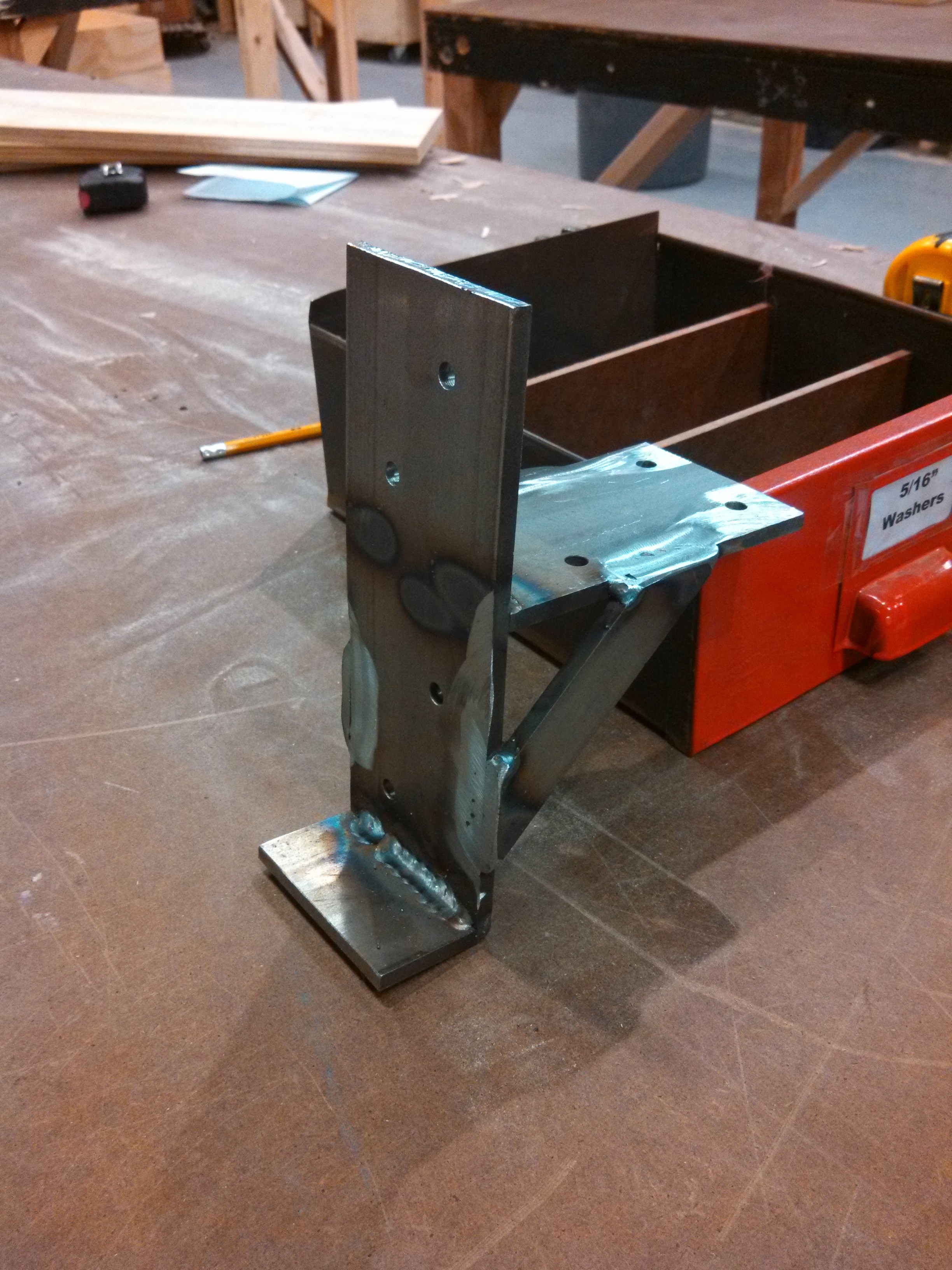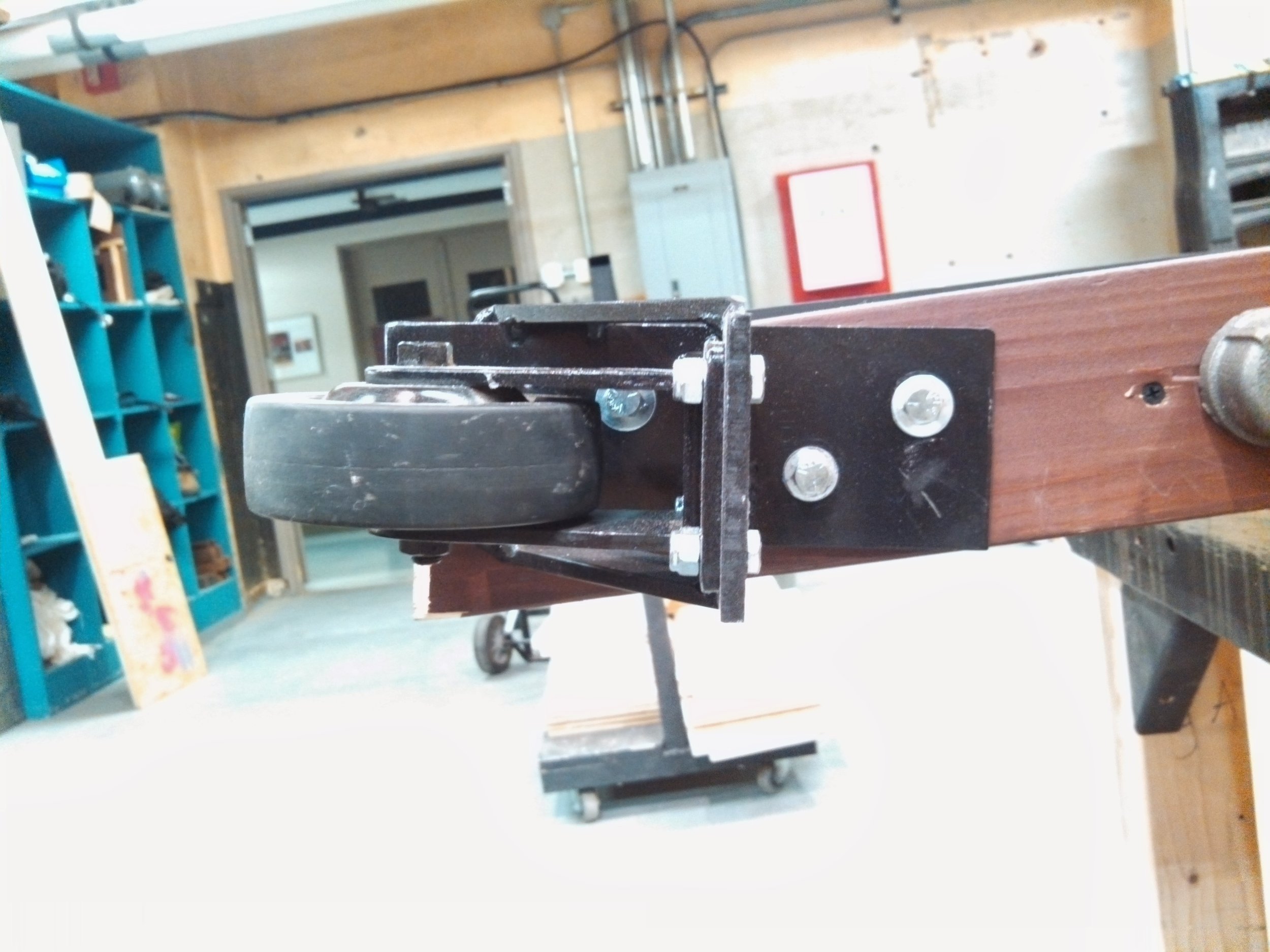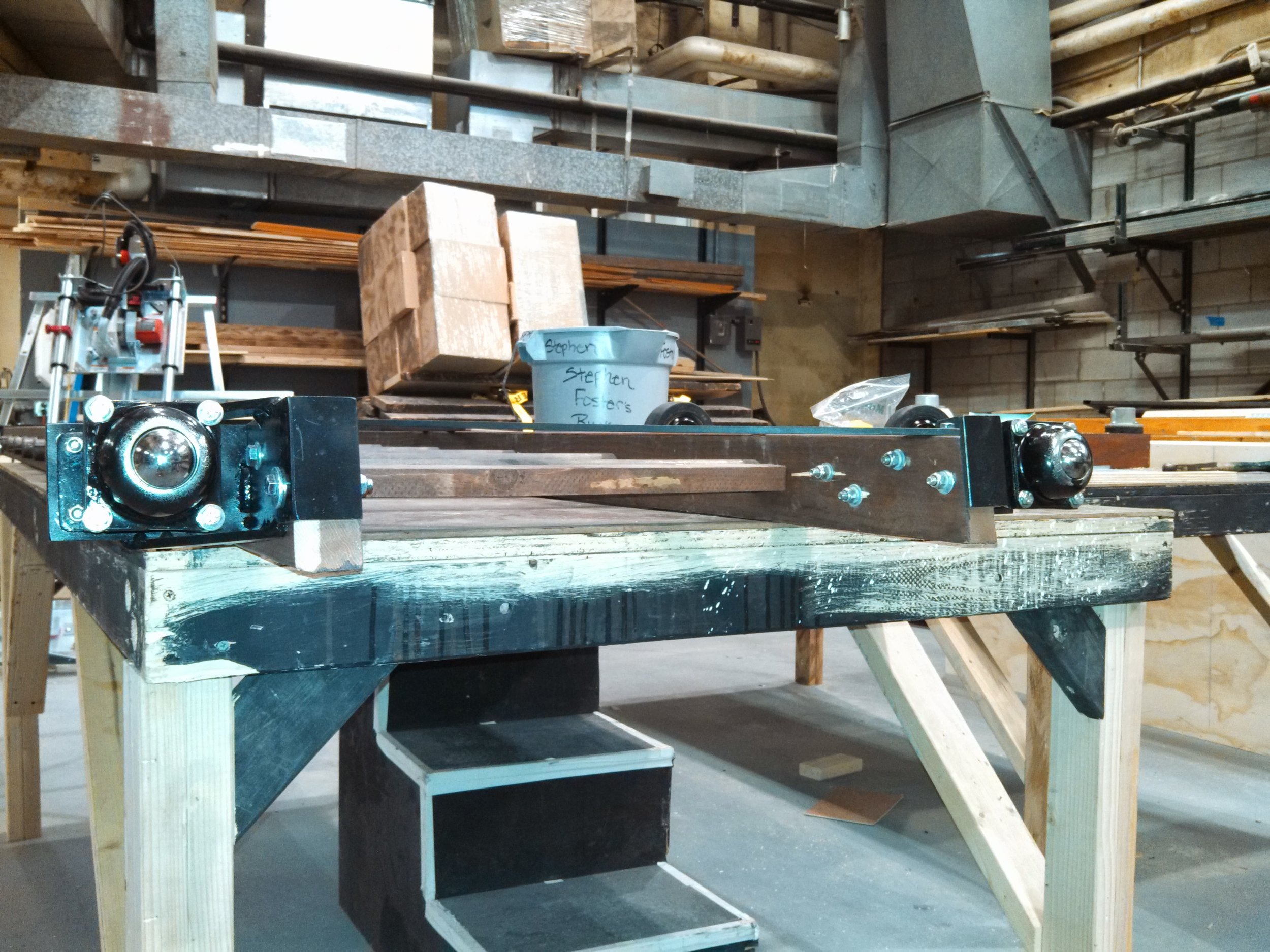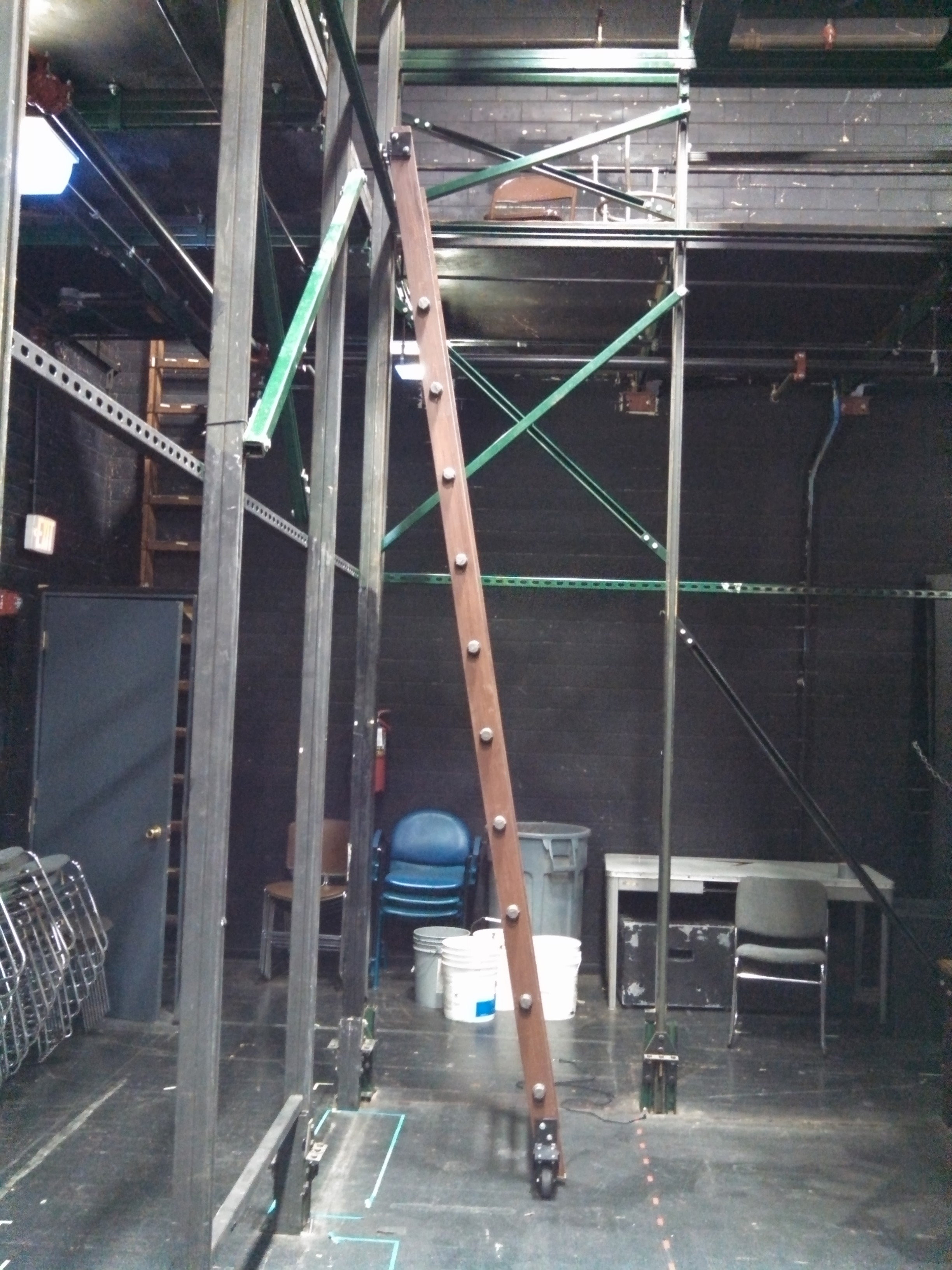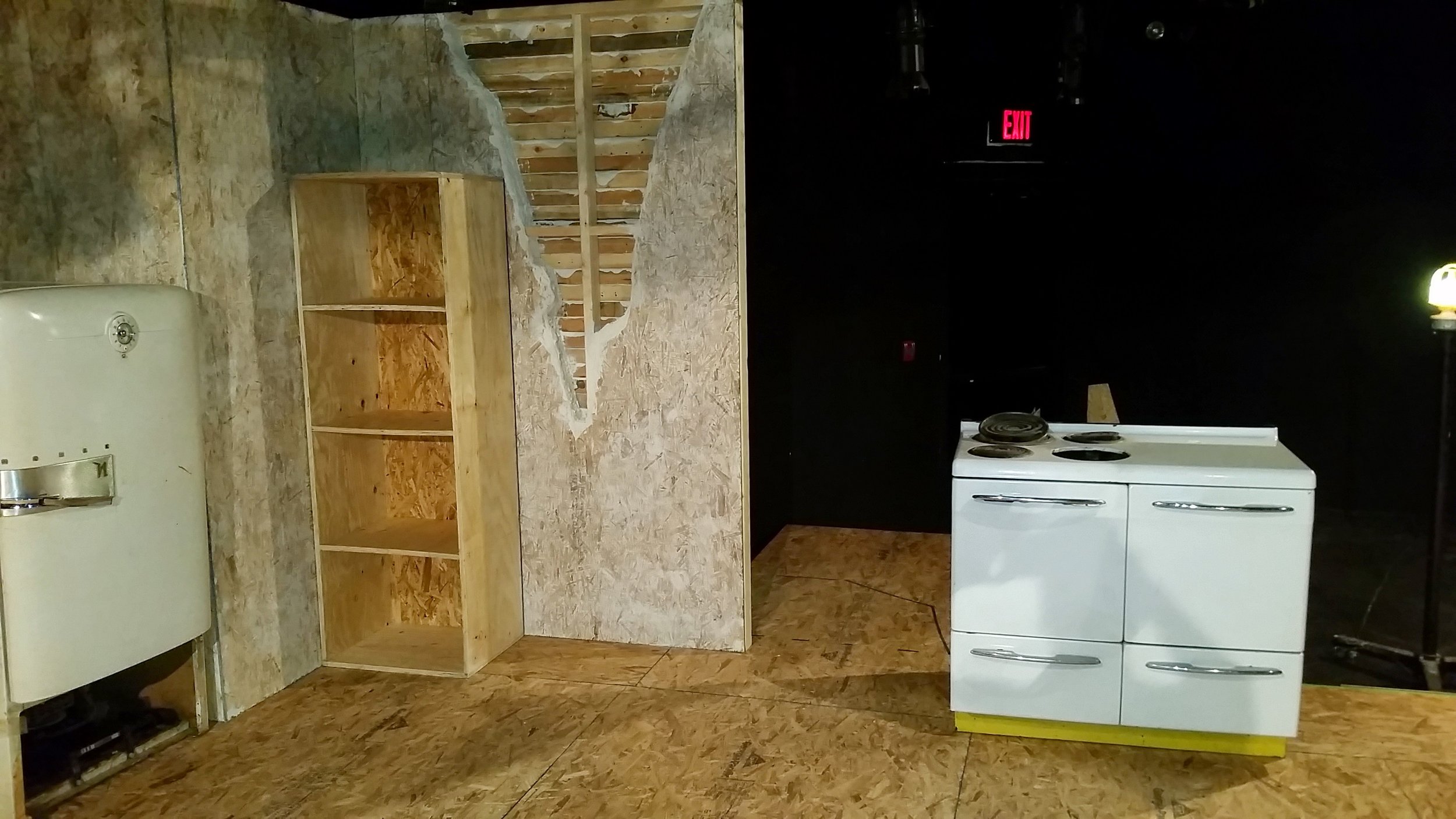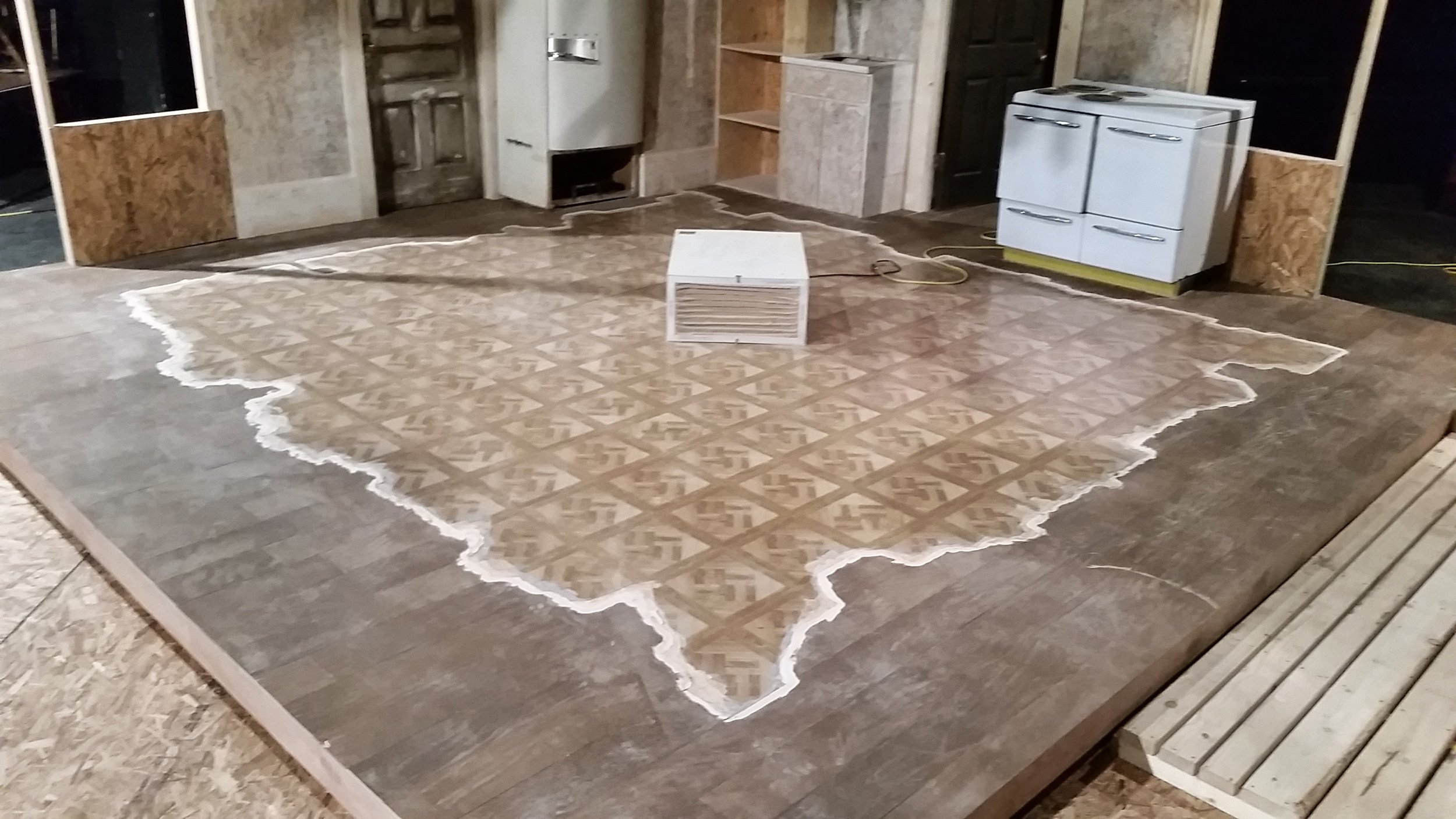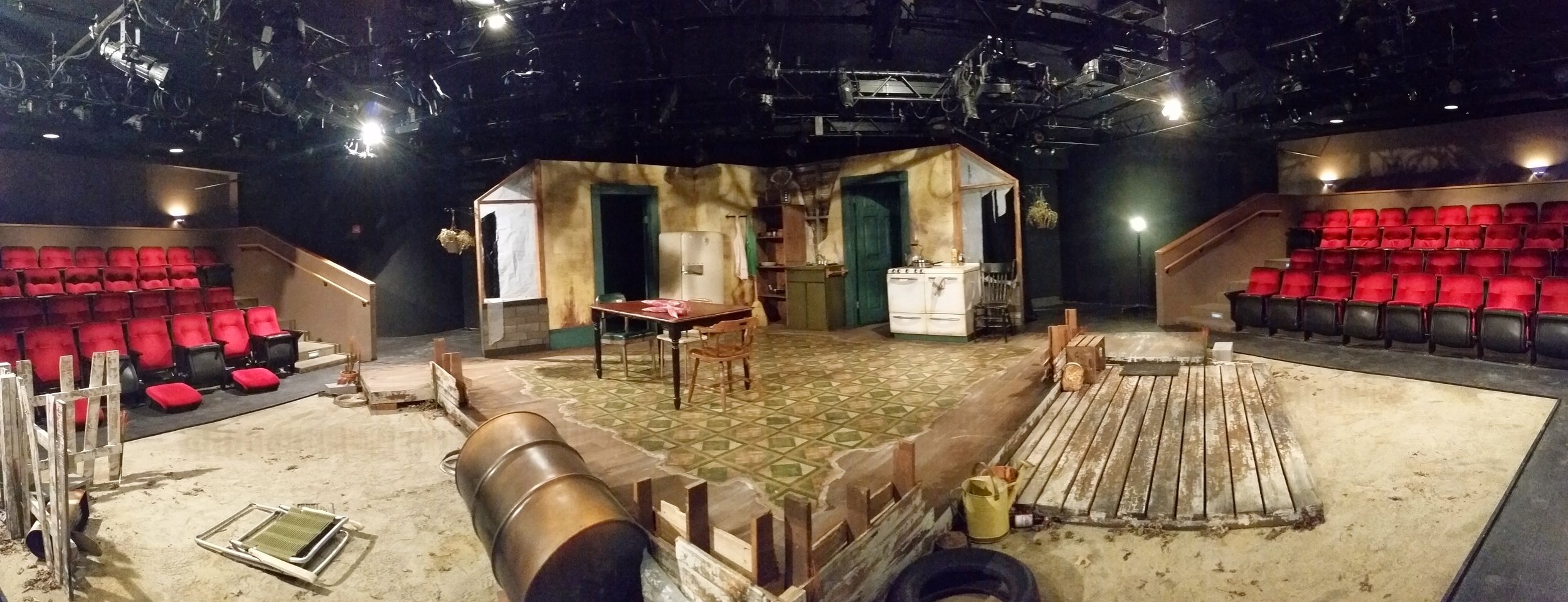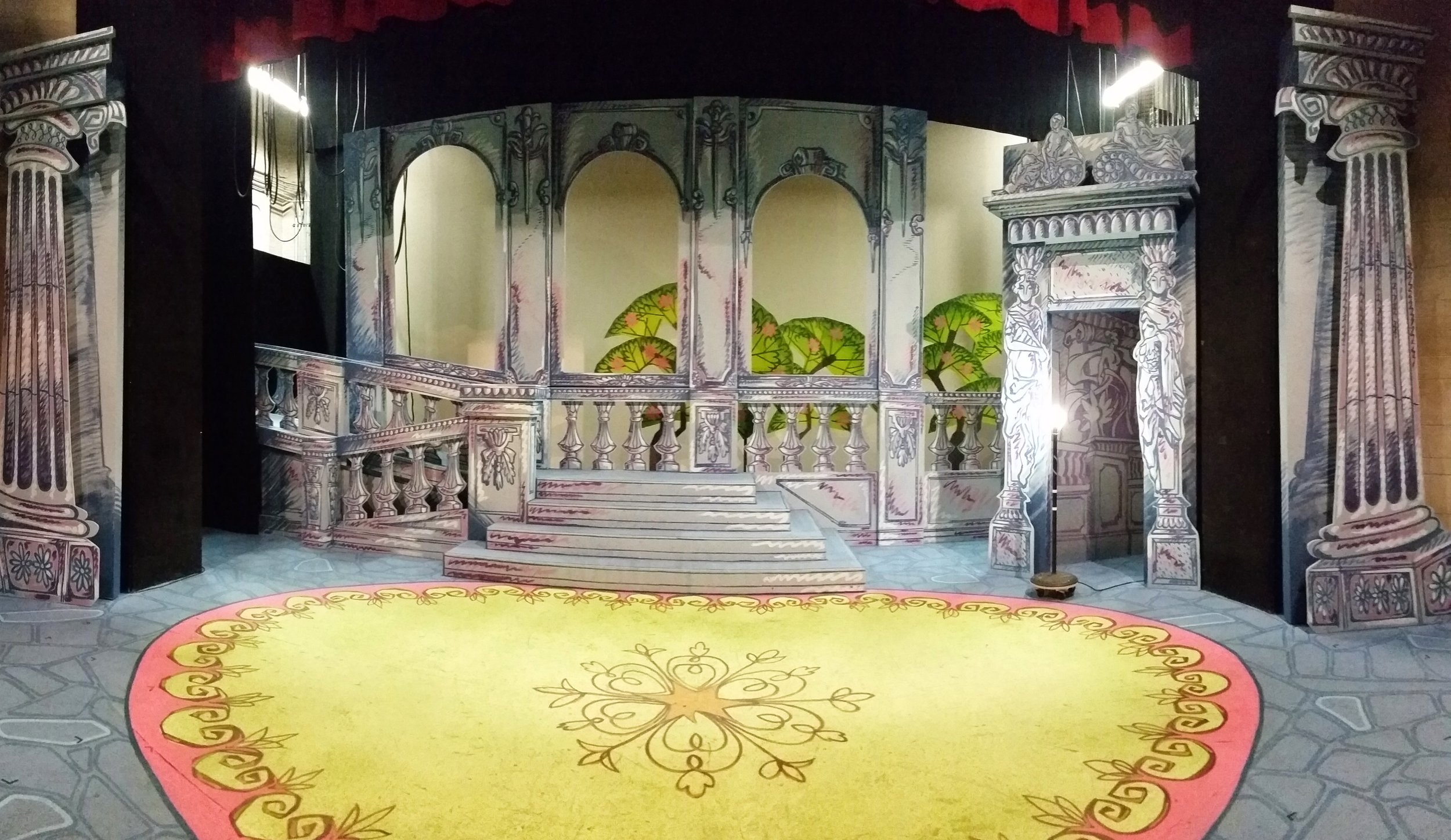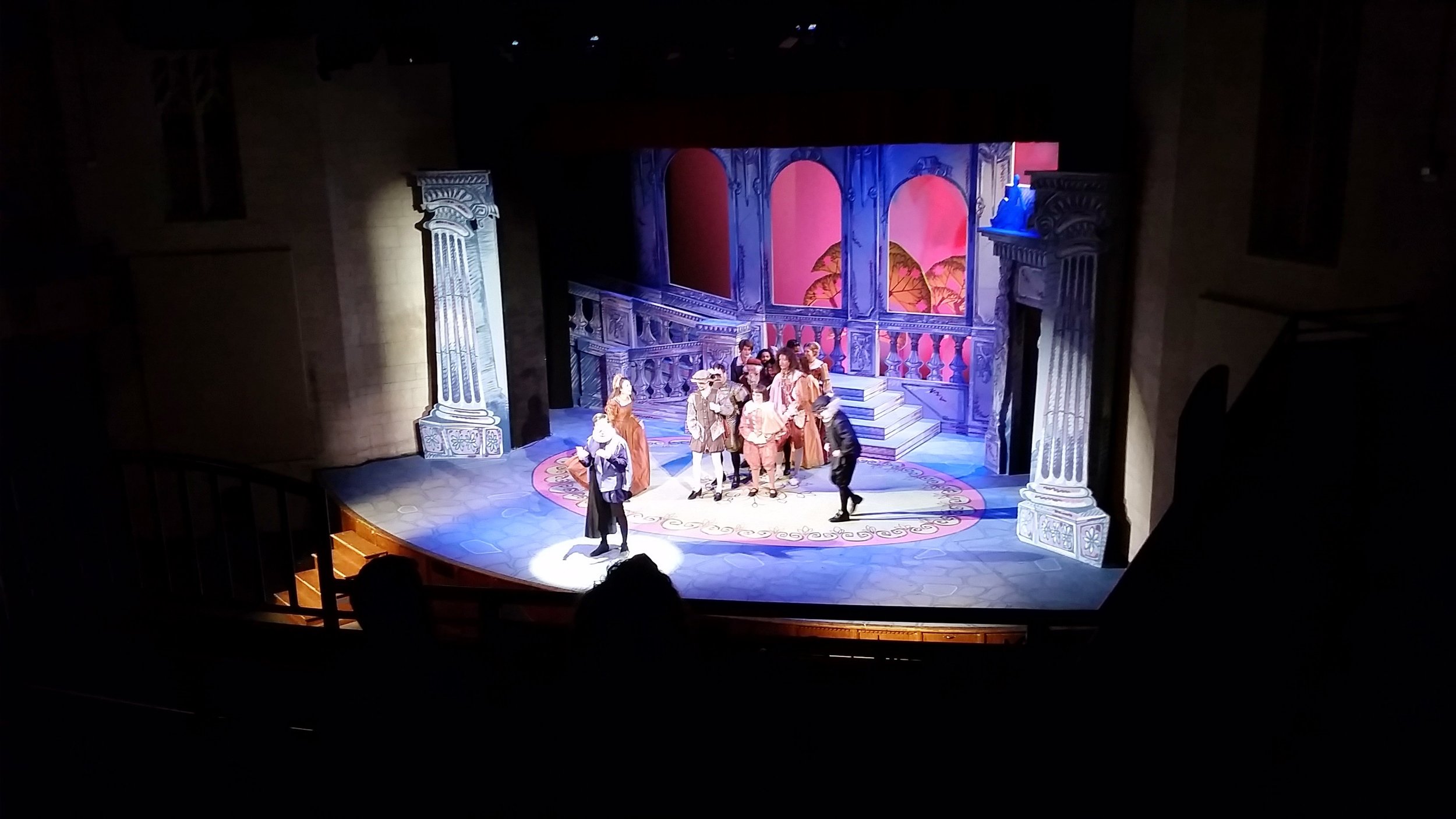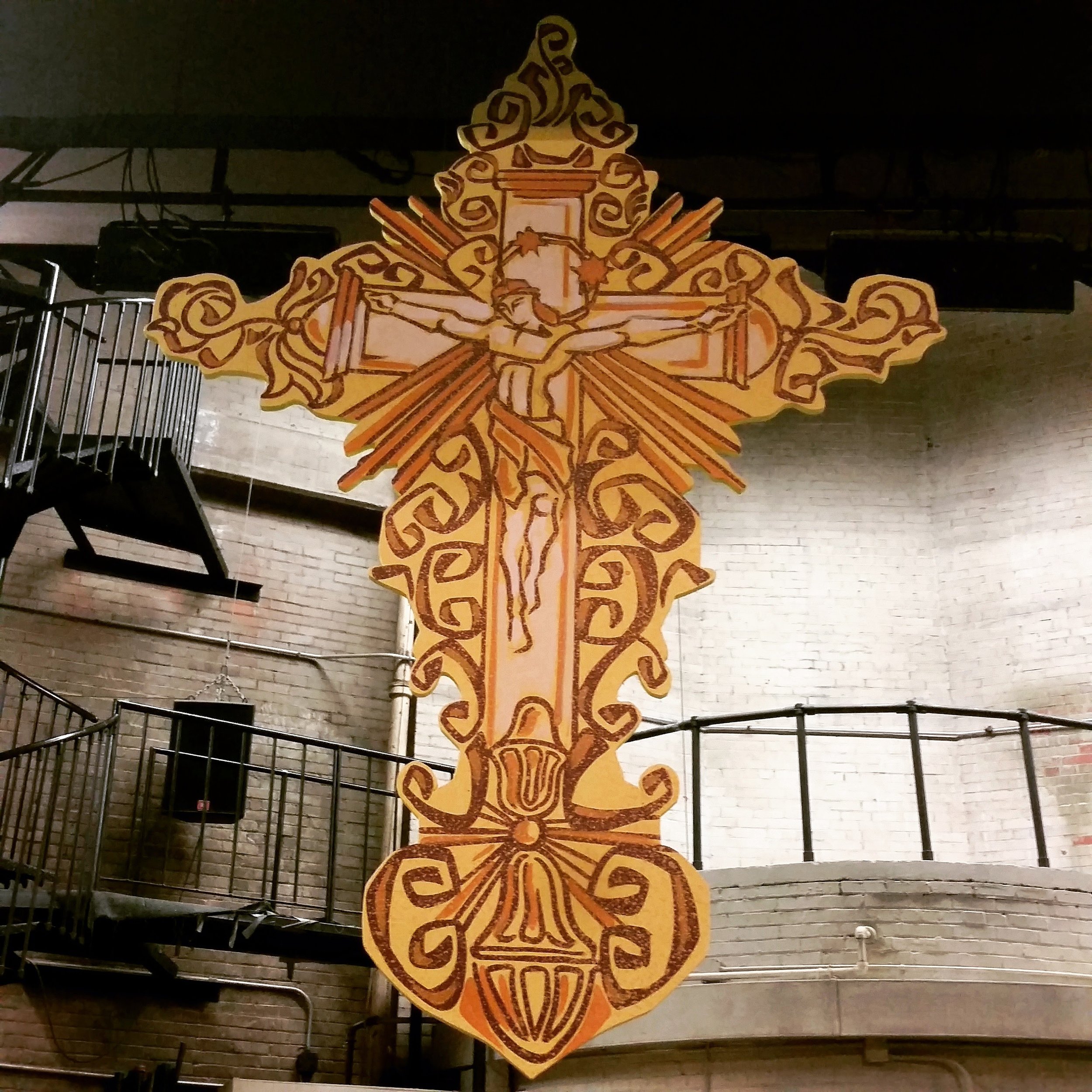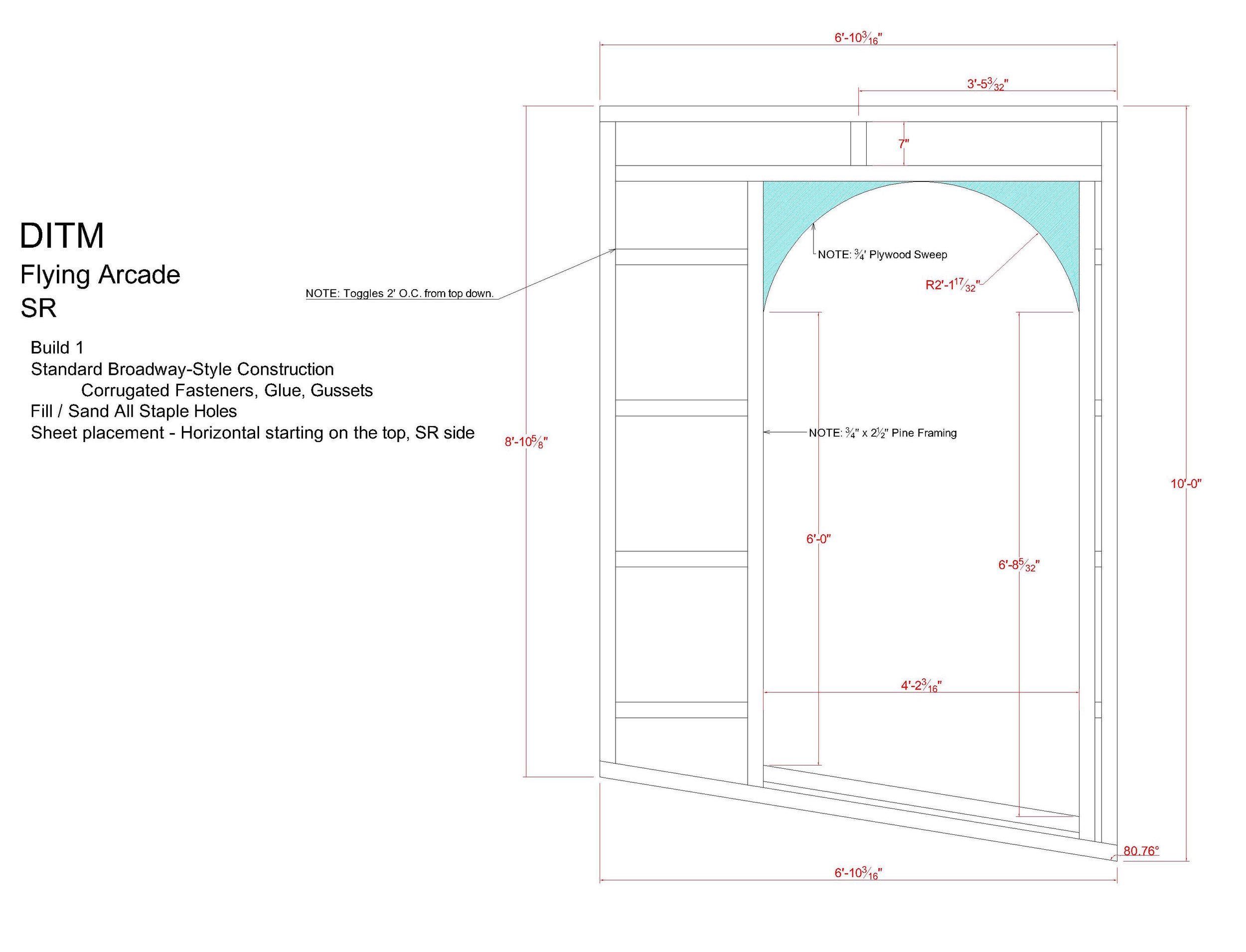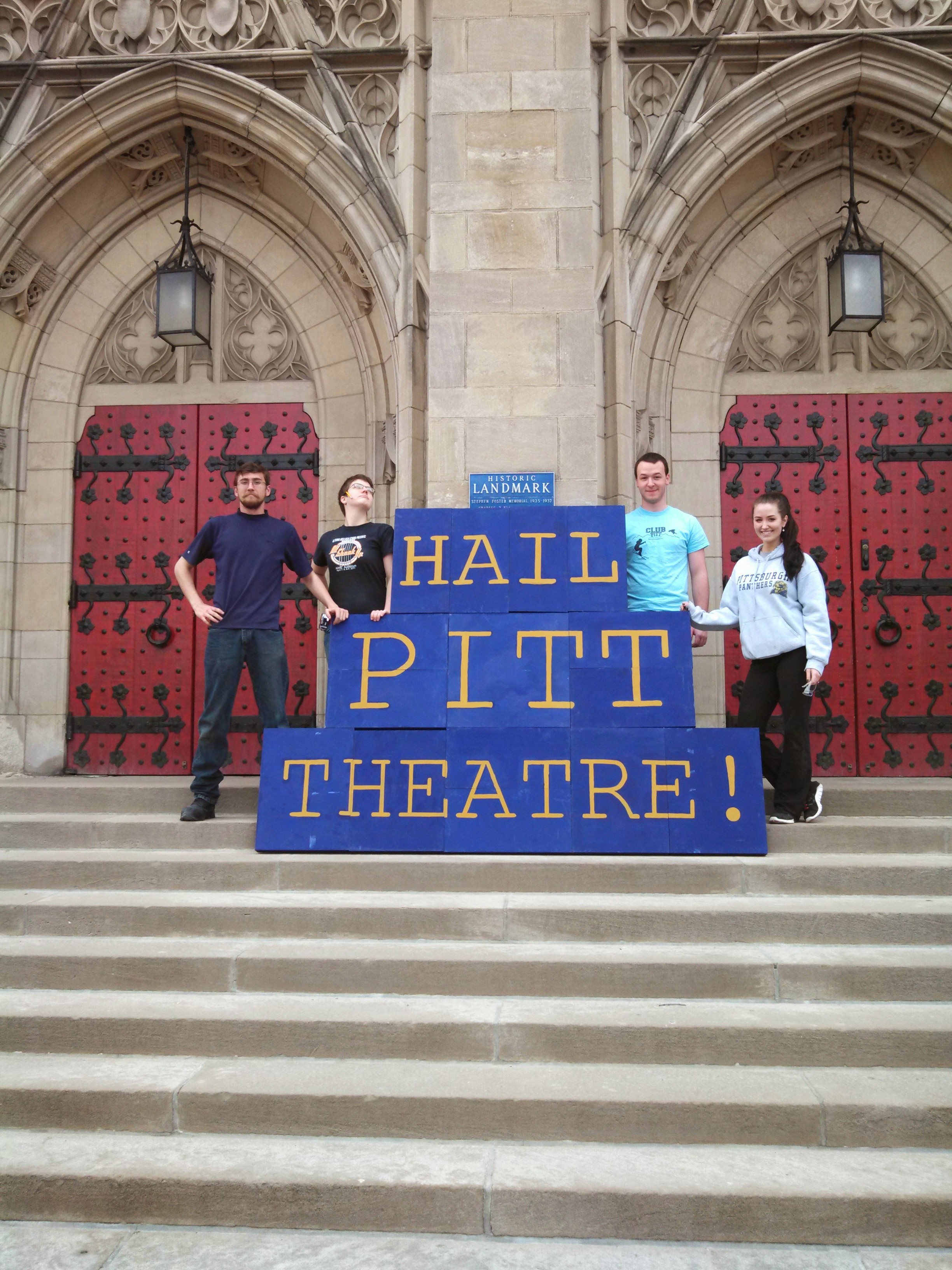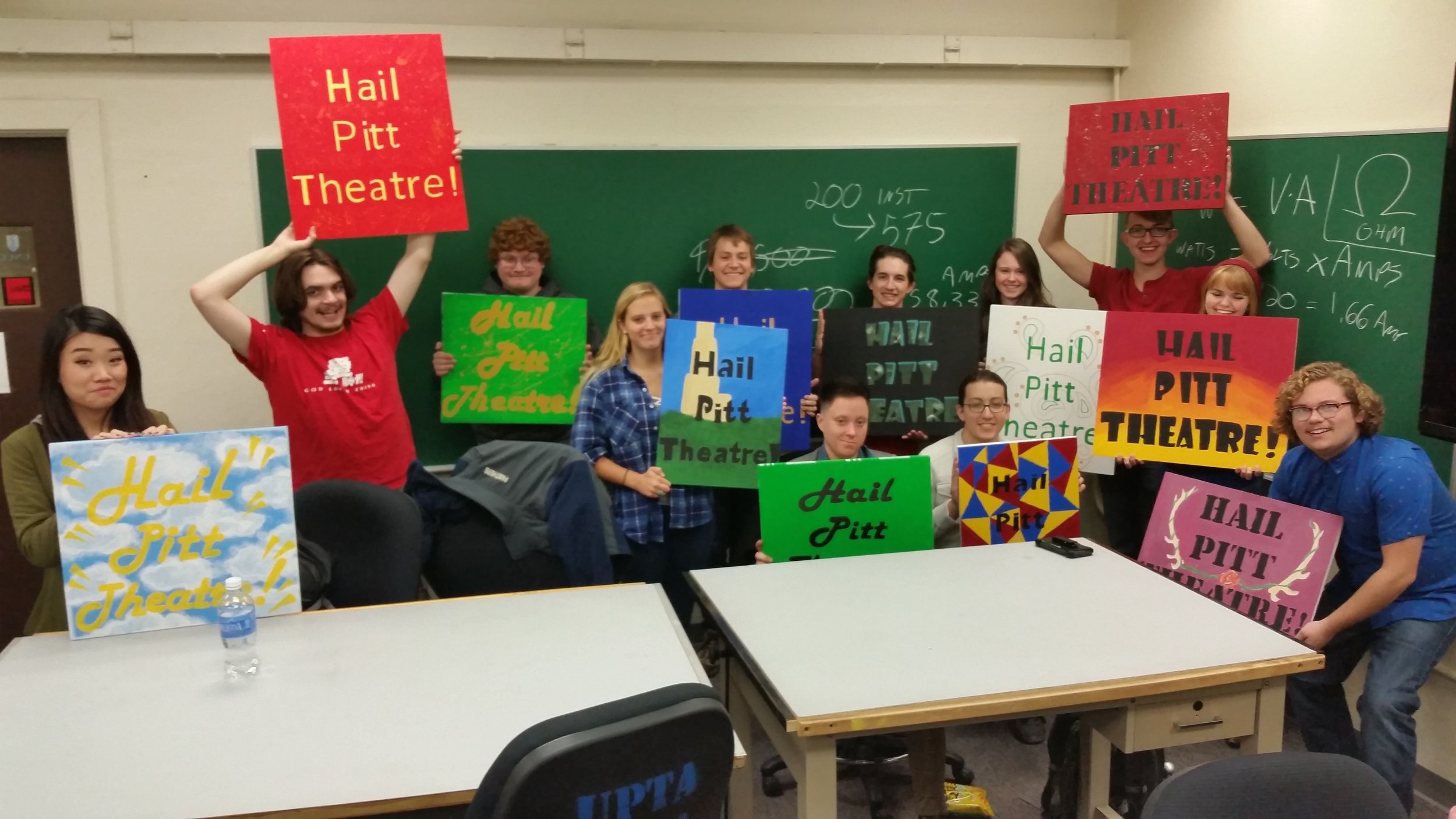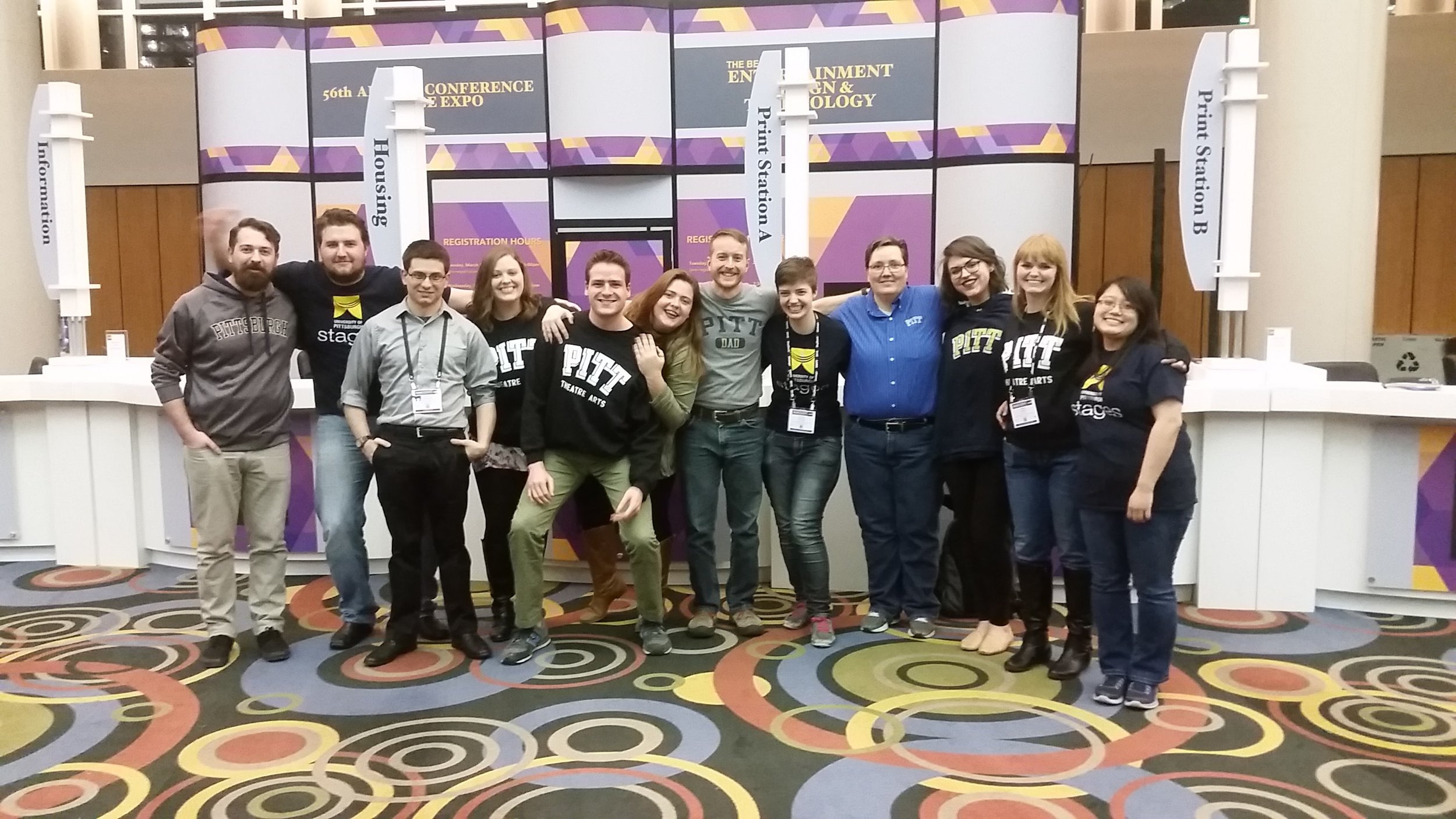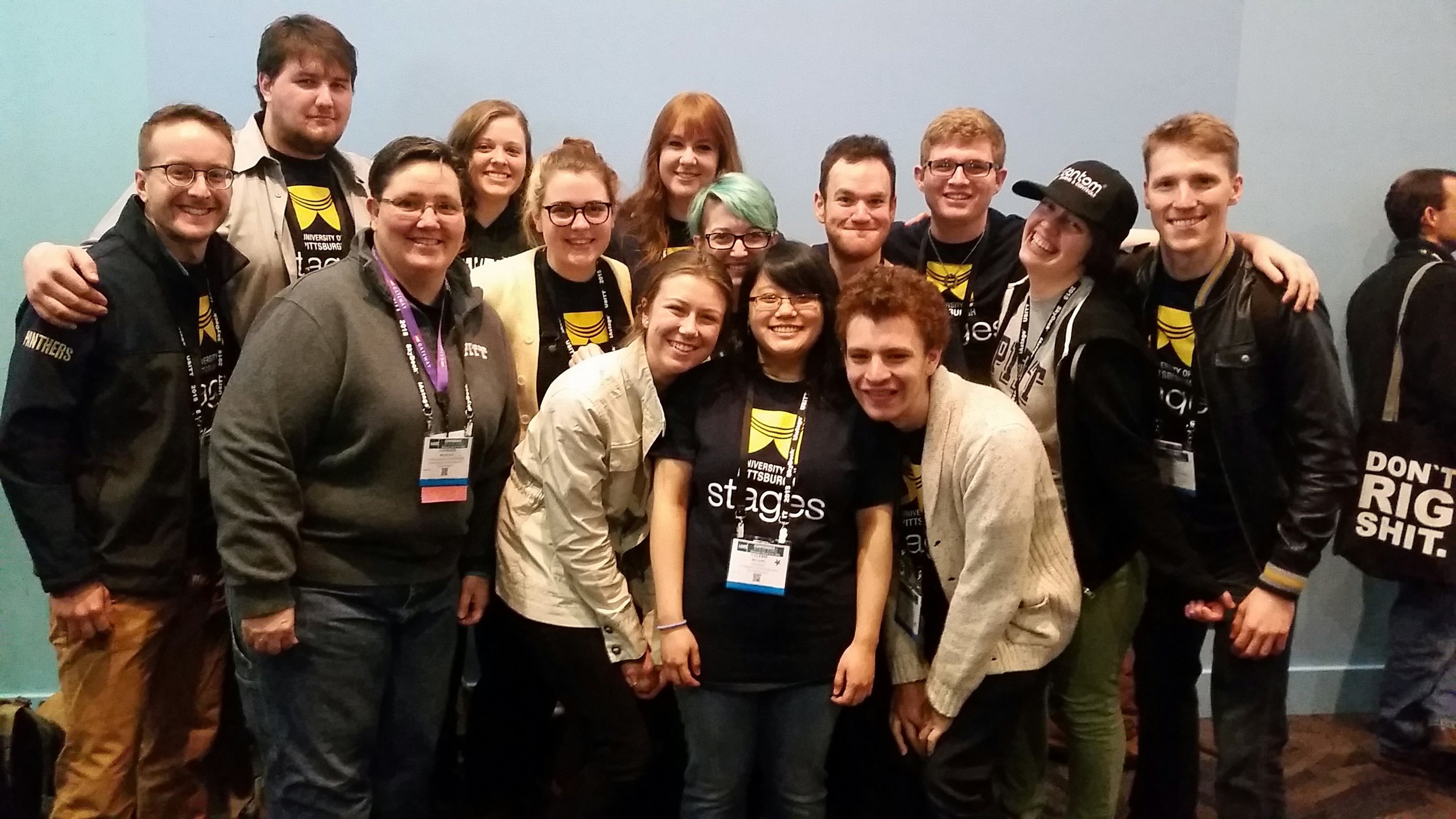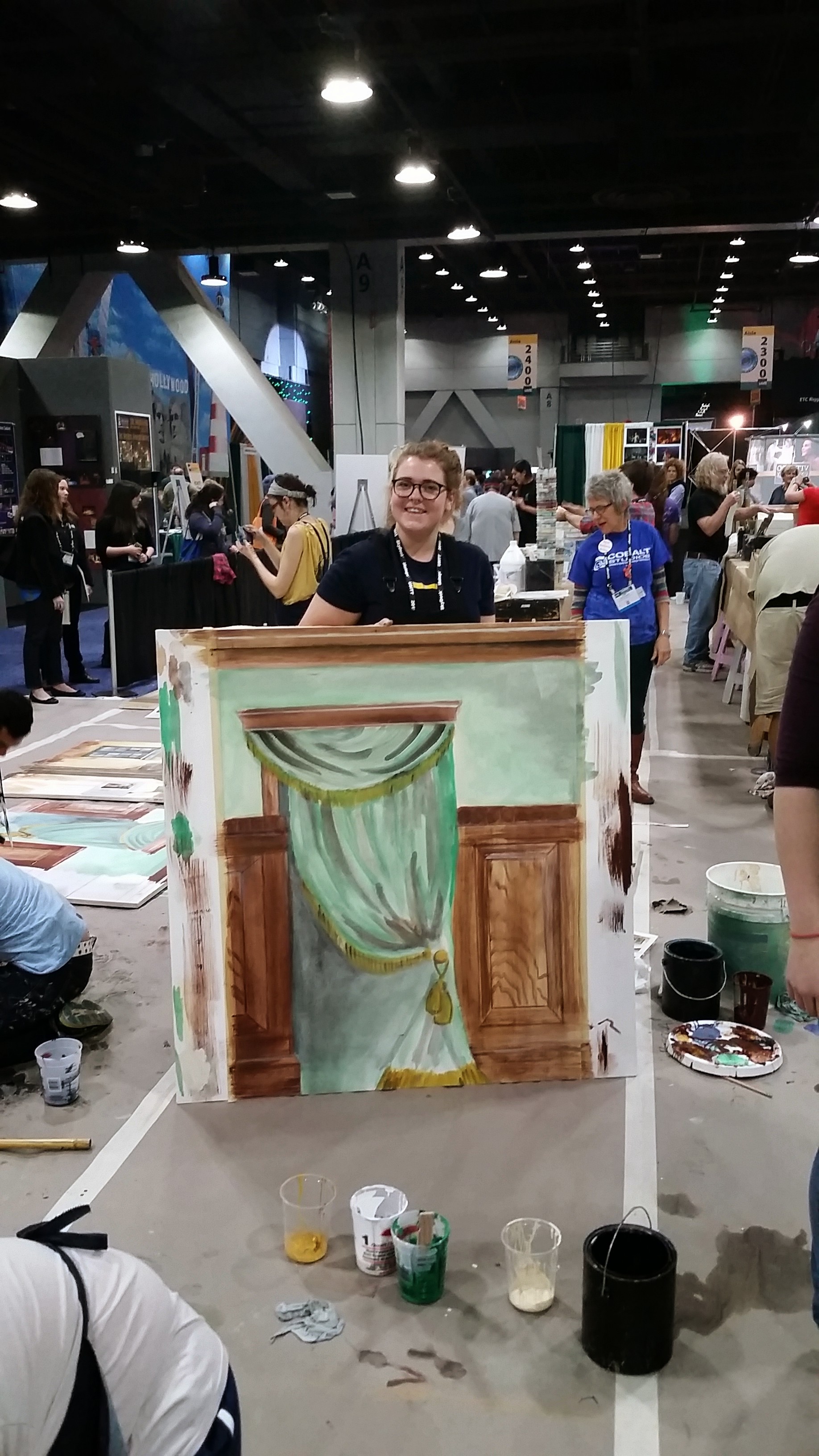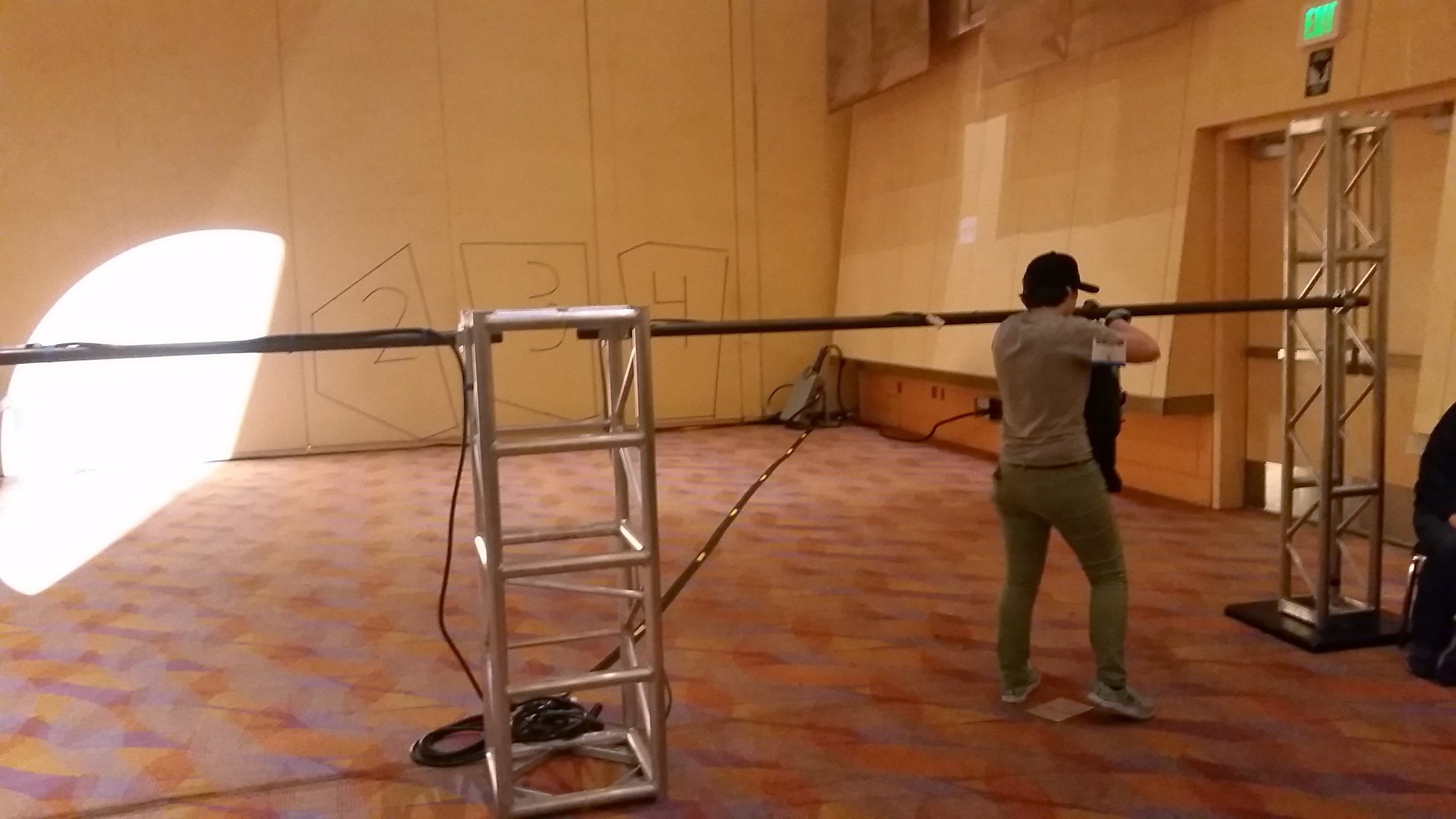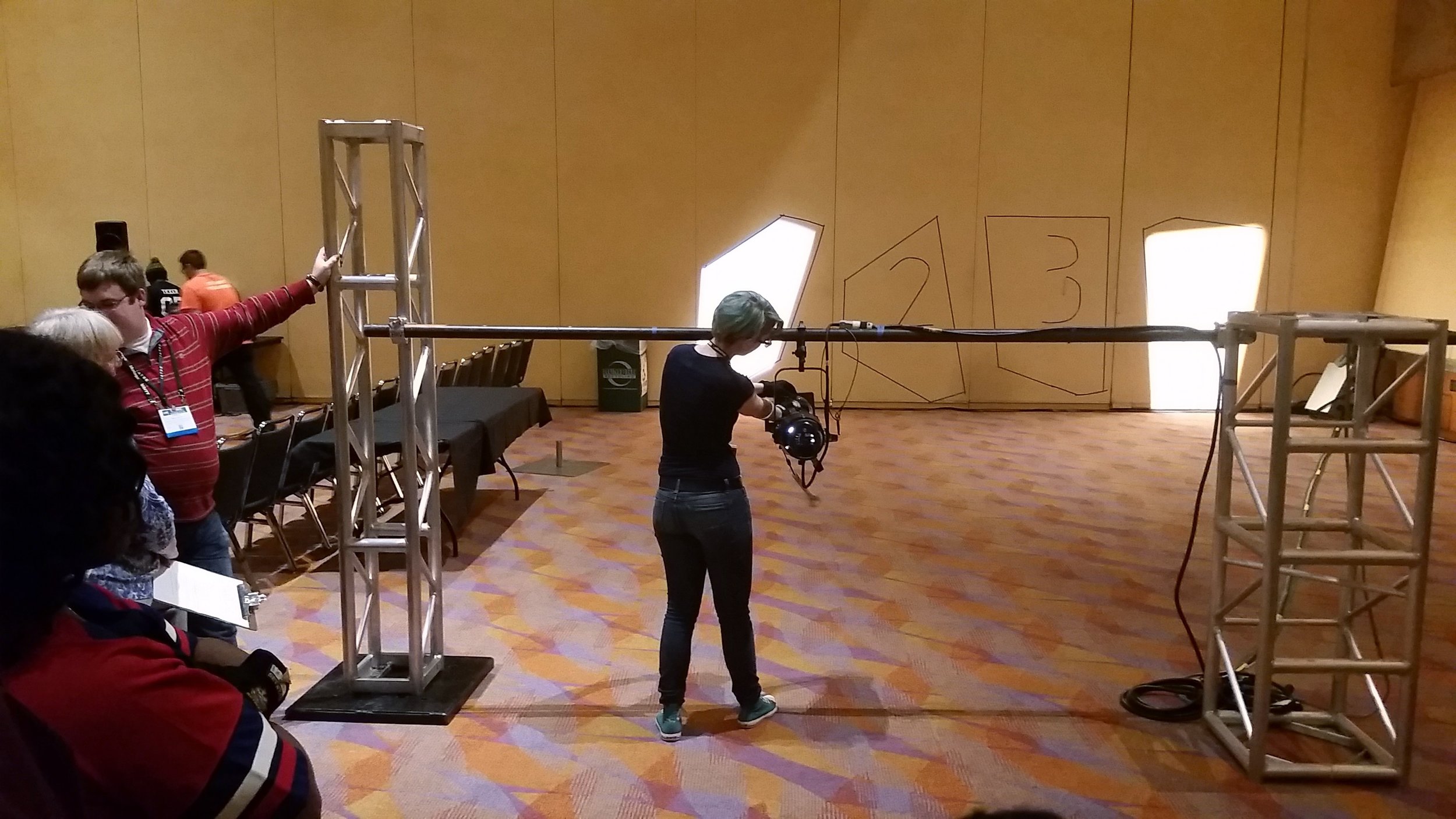Rhinoceros, 2016. Photo courtesy of University of Pittsburgh.
Pittsburgh, PA: 2013 - 2016
University of Pittsburgh
Technical Director / Lecturer, Department of Theatre Arts
The University of Pittsburgh Department of Theatre Arts is a smaller, but highly productive educator of students who are passionate about any and all aspects of the performing arts. The Department helps to produce 6-10 productions per academic year in three different spaces; the Charity Randall (478 seat proscenium), the Henry Heymann (153 seat thrust cabaret), and the Studio Theatre (100 seat black box.)
highlights
Coordinated and directed major theatre renovation using $200,000+ budget
Created and implemented bespoke hardware solutions to production issues
Built student interest in creating and teaching an Advanced Stagecraft class
Increased number of students interested in Technical Theatre classes and careers
Encouraged student engagement in USITT
Continue to act as a mentor and reference for students
JUMP FOR COMPREHENSIVE JOB RESPONSIBILITIES
Studio theatre renovation
During my first semester at Pitt, I was tasked with leading the effort of renovating the school’s 100-seat black box theatre. With limited lighting capabilities and walls clad in rough barn wood, I collaborated with our Scenic Designer, Gianni Downs. Through conversations we discovered that the need for modulation was critical - our students and our shows were always changing. We worked closely to design the 2,000 sq. ft space’s new configurable wall panel system. With these panels, the walls could become windows, doors, balconies, or whatever the production/class needed.
Drafting detail of custom steel brackets for the Studio
To achieve our vision I designed the panels and their custom steel hardware. The custom brackets and offsetting hardware achieved their goal of versatility in conjunction with the panel’s Sintra-clad aluminum frames. In addition to dealing with material and production tolerances, another challenge of the project was the size of the panels and hardware as the Unistrut posts where the panels would mount were only uniform in the vaguest of senses. This required me to complete a comprehensive site survey and calculate the allowed range between posts. I also researched and chose the type of dance floor that replaced the old gymnasium floor and designed the optimal hardware that facilitated the installation of new lighting battens.
I successfully guided this multi-year, $200,000+ project to completion. The Studio Theatre is now the modular, usable space the students and classes need. The photos below show the before, after, and process of renovation.
A midsummer night's dream
By William Shakespeare
Directed by Victoria Rhodes
Scenic Design by Gianni Downs
Lighting Design by Joseph Spinogatti ‘17
This production required a moon to traverse the stage to illustrate the passage of night. I designed and directed the students' build of the 6' diameter light box, which was to travel on tensioned 1/8" aircraft cable "rails" as it was pulled up the slope by a 1/16" aircraft cable attached to the winch. The moon also had hard safeties, like cable keepers, built in to keep it from falling in case of hardware failure. This system had an electric tether, which provided the power and control for the LEDs.
There were many interesting aspects to this project, from the math required to time the moon's travel to the setup required to pull the aircraft cables to tension. Gladly this effect was exactly what the designer and director wanted, a slow and steady illustration of the passing of the night's events over the course of 2 1/2 hours.
Moonbox Installation
After determining the angle and placement of the aircraft cables, Unistrut was installed into the SR wall of the theatre with concrete anchors and bolts. Then eyebolts and turnbuckles were attached to the Unistrut, which allowed for vertical adjustment. The SL terminations for the aircraft cable consisted of a flanged 1 1/2" Schedule 40 pipe lagged into the stage deck with the top being chained to structural steel tied into the SL wall of the theatre. The aircraft cables were then measured, terminated with copper Nicopress swages, tensioned, and lastly tested with a Loos & Co. wire cable tension gauge. The Moonbox was then hung on the cables and hard keepers added to the back to keep the Moon from falling down in case of failure.
Rigging Hardware
⅜”-16, Grade 5, Hex bolts - MCM # 92865A628
⅜”-16 Internally Threaded Anchors - MCM # 97083A310
Approximately 900 lbs of pull out strength, incl. 5:1 safety ratio
Unistrut P1000 green slotted - MCM # 3310T59
½” Eyebolts w/ shoulder - MCM # 3014T491
½” Unistrut washer - MCM # 3585T13
½”-13 Unistrut nut - MCM # 3259T15
⅝” Turnbuckles - MCM # 3001T57
⅛” wire rope - 7x19 w/ copper swaged eyes and thimbles
tensioned to approximately 400 lbs (5:1 safety ratio)
1/16” wire rope - 7x7 w/ copper swaged eyes and thimbles
¼” Proof Coil Trim Chain
¼” Forged Shackles
800 lb SWL
3/16” Horizontal Mounted Pulley - MCM # 3074T31
1 ½” Schedule 40 Batten Clamps
1 HP worm drive electric motor w/ internal brake
15:1 geared winch drum
Venus
By Suzan Lori-Parks
Directed by Cynthia Croot
Scenic Design by Gianni Downs
The scenic design for this production called for rolling library ladders. Readily available ladders of this style turned out to be inordinately expensive, but I was not be deterred. I came up with a ladder design that Scenic Designer Gianni Downs approved. I then designed my own hardware to suit the situation. Since the walls of the Studio Theatre already had horizontal Unistrut runs all around the perimeter, I decided to use that instead of adding a pipe.
The horizontal traveller trolleys I made used garage door-style rollers and UHMW spacers to give freedom of motion. Two of these trolleys were bolted to the ladder's top. With the trolleys guiding the ladder and the bottom casters supporting the weight, the ladder to traverse the width of the stage with ease.
For USITT 2014, this design was submitted for the Scene Design Poster Session and was accepted. However, due to unforeseen circumstances I was unable to actually present the poster.
dog in the manger
By Lope de Vega
Directed by Dennis Schebetta
Scenic Design by Cully Long
This design was inspired by the designs of Maurice Noble. All flat architecture with painted dimensioning and detail.
Curse of the starving class
By Sam Shepard
Directed by Cynthia Croot
Scenic Design by Cully Long
This set design intended to be a rundown country house. Part of making it seem real was using typical construction materials, such as 2x4 walls, OSB, vinyl flooring, and actual dirt in the yard.
Not only is Cully Long a wonderful designer to work with, but a great scenic artist as you can see in in the Dog in the Manger set.
For images from both productions see below gallery.
nine
By Arthur Kopit
Adapted from the Italian by Mario Fratti
Directed by Dennis Schebetta
Scenic Design by Gianni Downs
The following video shows the strike process for Nine at Pitt. During my time as the TD at Pitt, I ensured that all efforts were completed safely, including full strikes of large shows like Nine.
Academic Courses
Instructor of Record
Introduction to Stagecraft - Spring 2014
Introduction to Stagecraft - Fall 2014
Introduction to Stagecraft - Spring 2015
Introduction to Stagecraft - Fall 2015
Stagecraft 2 - Spring 2016
Sample Syllabi and Documents:
usitt
One of the most fun aspects of Pitt Theatre is their encouragement of student participation in USITT locally and nationally. In addition to chaperoning students at conferences, I also started a weekly feature at the Pitt USITT student chapter meeting. It was called "Fun Times with Jon," where I would present interesting technical theatre items, or field questions on production issues. It was extremely helpful in making sure the students felt comfortable in seeking new information and answers.
comprehensive Responsibilities
Responsibilities included producing all Mainstage shows with the technical staff, which included, but was not limited to, the following:
Collaborating with designers to ensure feasibility
Estimating and costing out of scenic designs
Producing technical draftings and build schedules
Overseeing students in Scene Shop and teaching building techniques
Producing scenic elements as needed
Loading-In scenery and ensuring all technical elements were ready for Tech
Assisting in Technical Rehearsals
Training Run and Fly Crew
Responding to all notes throughout run of production
Running and ensuring a safe and efficient Strike
Student Lab and Student Group production related responsibilities included, but were not limited to, the following:
Working with designers to achieve the best result within budget constraints
Advising all technical aspects of their productions
Assisting in any production related notes
Training Board Operators
Dance Department production related responsibilities included, but were not limited to, the following:
Assisting and providing technical elements and supervision
Training students in lighting equipment and procedures
Serving as Staff Production Manager
Non-production related responsibilities included, but were not limited to, the following:
Serving on committees such as Budget, Production Calendar, Season Selection, and NAST accreditation
Purchasing for departmental budgets
Maintaining receipts and production budgets
Advising and specifying facility upgrades
Coordinating facility service requests
Implementing recommendations laid out in Rigging Inspection Reports
Assisting and providing any technical requirements for departmental classes
Coordinating all technical elements for departmental events
Coordinating facility and equipment rentals
Academic responsibilities included, but were not limited to, the following:
Teaching all portions of Introduction to Stagecraft, including all lectures and all hands-on exercises
Teaching all portions of Stagecraft 2, including all lectures and all hands-on exercises
Advising of students
Mentoring students in technical skills and careers
Directing students to professional employment in and out of theatre
Hosting opera viewing nights













